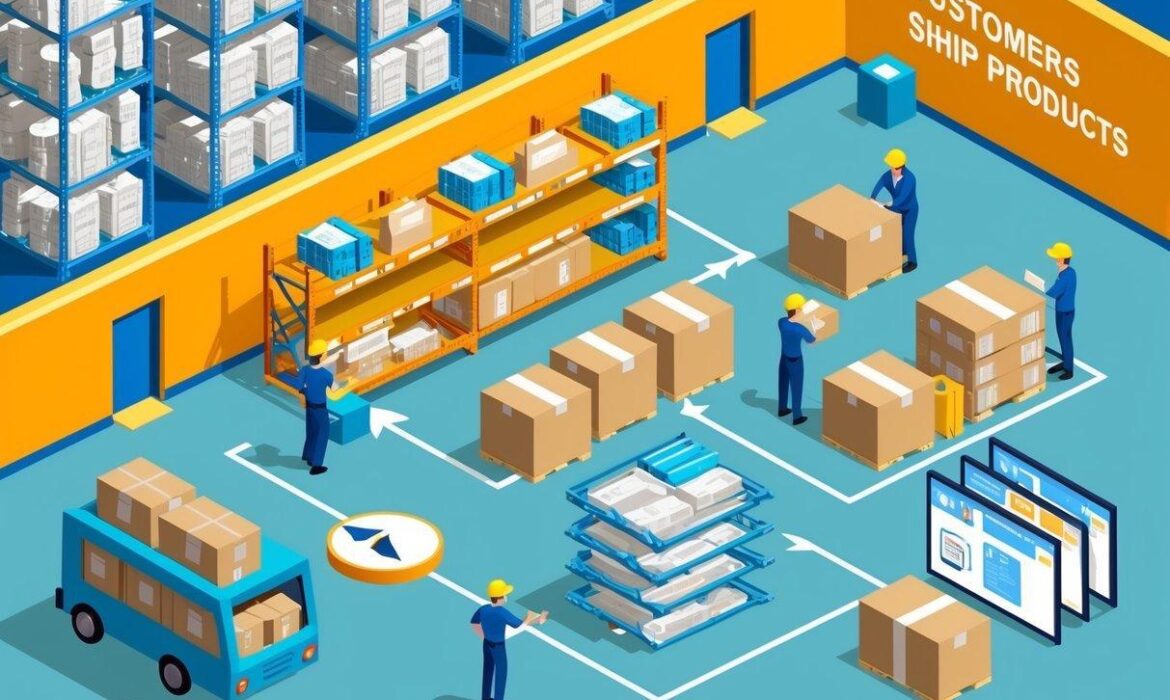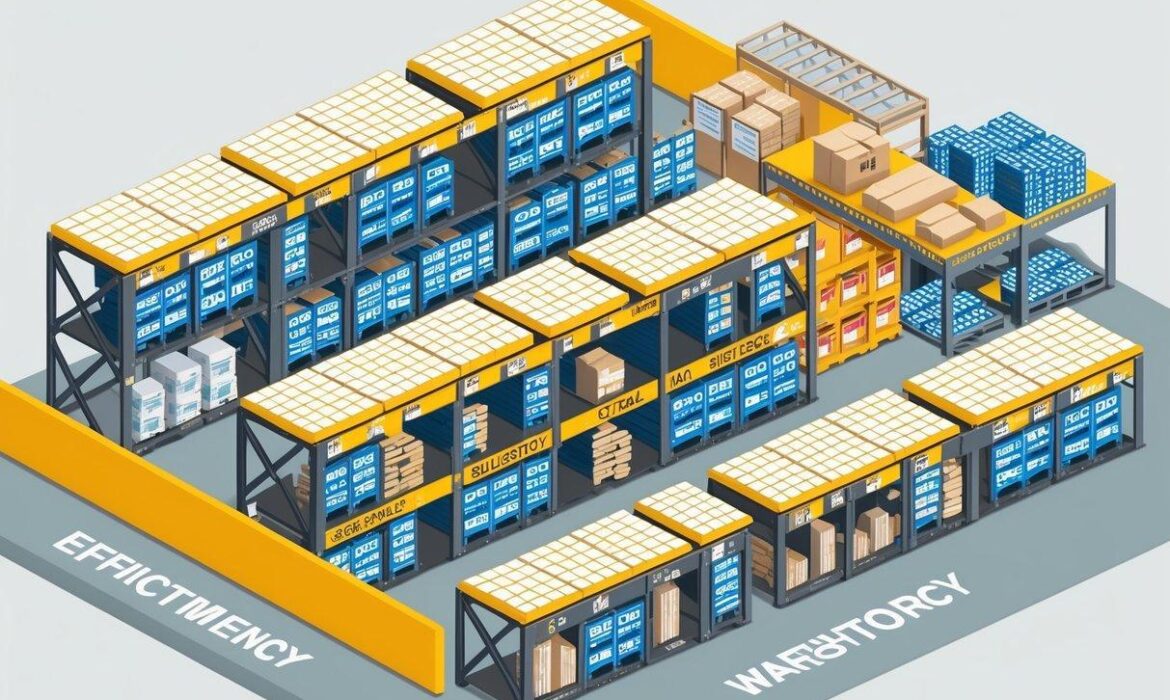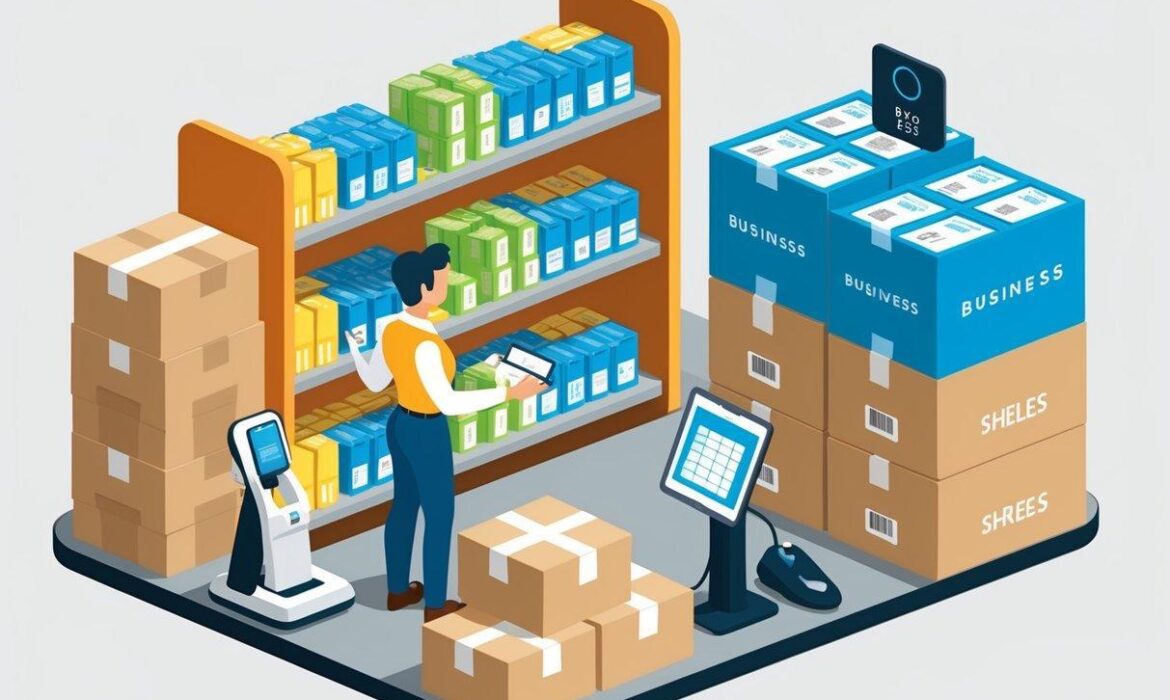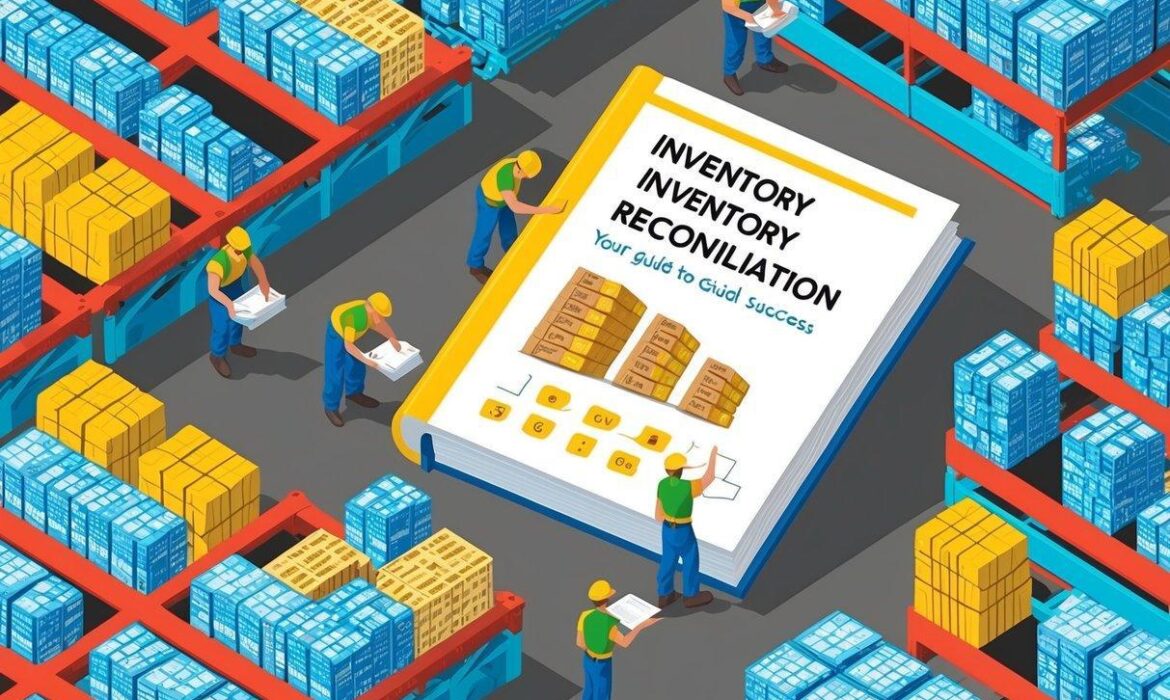Returns Processing Explained: What Happens After Customers Ship Back Products
Returns processing isn’t just about taking back unwanted items—it’s about recovering value, maintaining customer relationships, and protecting your brand reputation.
This guide walks you through what happens after customers ship products back, showing how strategic returns management can transform this necessary expense into a competitive advantage.
Understanding Returns Processing
Returns processing refers to the structured workflow that handles products sent back by customers after purchase. Unlike forward logistics (getting products to customers), returns processing deals with reverse logistics—managing items flowing backward through the supply chain.
This process typically includes several key components:
- Return authorization and tracking
- Receiving and sorting returned items
- Quality inspection and condition assessment
- Decision-making about each item’s fate
- Processing the appropriate customer credit or exchange
- Routing items to their next destination (restocking, refurbishment, liquidation, etc.)
For businesses, returns processing serves multiple purposes beyond simply taking back unwanted merchandise. It provides valuable data about product issues, helps maintain inventory accuracy, and creates opportunities to recover value from returned goods. Most importantly, it directly influences customer satisfaction and loyalty, making it a crucial touchpoint in the customer experience journey.
The returns experience often represents the final interaction a customer has with your brand during a purchase cycle, making it especially important for shaping overall brand perception. Many shoppers check a retailer’s return policy before making a purchase, showing how deeply returns factor into buying decisions.
This critical touchpoint affects customer behavior in several ways:
- Repeat purchases: A positive returns experience encourages customers to shop with the same retailer again.
- Brand loyalty: Customers who have a negative returns experience are less likely to return to that retailer.
- Purchase confidence: Consumer-friendly return policies can actually reduce return rates by giving customers confidence to buy.
- Word-of-mouth marketing: Shoppers often share their returns experiences with friends and family.
The connection between returns and customer lifetime value is clear. When customers know they can easily return products that don’t meet their expectations, they shop with greater confidence and spend more over time. This makes strategic returns processing a valuable customer retention tool that builds trust and encourages future purchases.
Steps Involved in Returns Processing
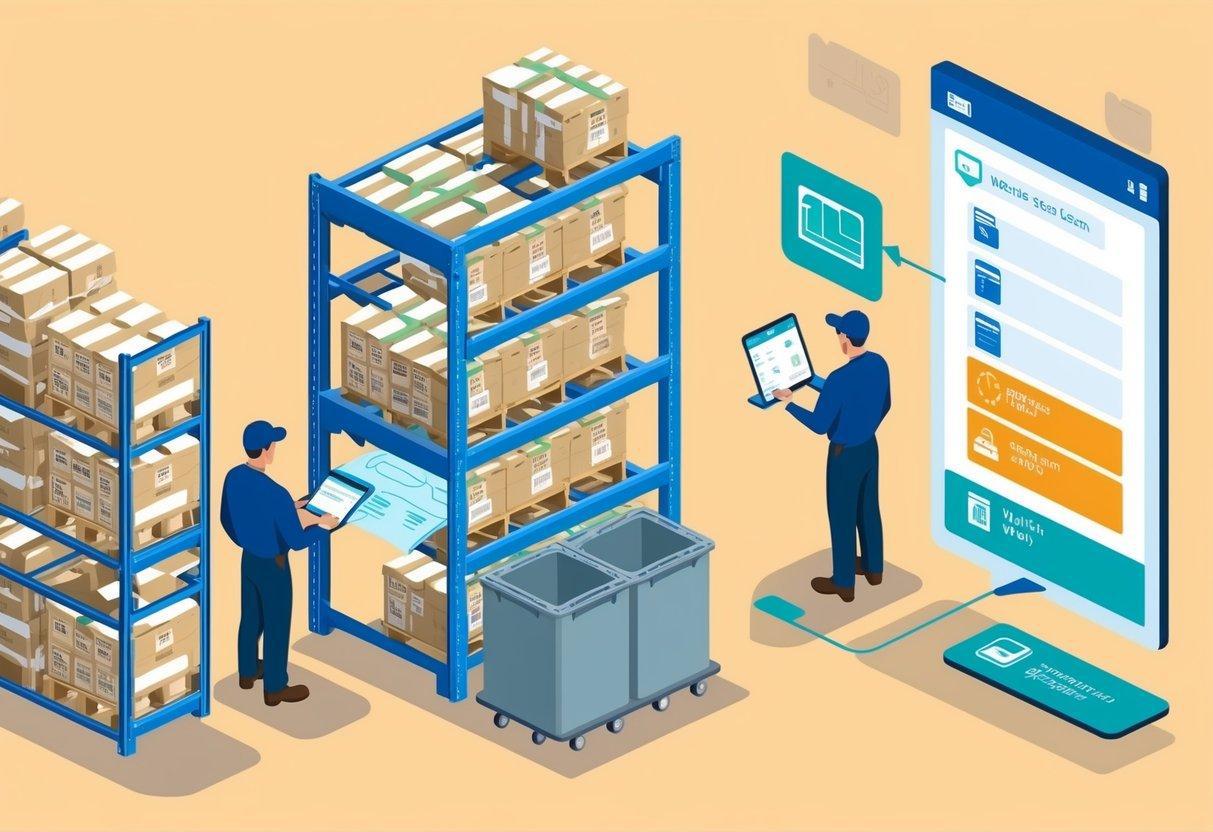
A streamlined returns process creates both operational efficiency and customer satisfaction. Let’s examine the key stages and how they impact your business results.
Initial Stages
The foundation of effective returns processing begins well before a product arrives back at your warehouse. Getting these early steps right reduces complications later in the process.
Return Policy Review
A clear, straightforward return policy serves as the roadmap for both customers and your team when handling returns. This policy should outline:
- Eligibility requirements (time limits, condition standards)
- Process steps for initiating returns
- Documentation or packaging requirements
- Expected timelines for processing and refunds
- Any exceptions or special circumstances
The best return policies balance customer needs with business protection. They use direct language that communicates expectations without overwhelming customers. Overly restrictive policies may discourage purchases, while excessively lenient ones could invite returns abuse.
Regular policy updates keep you aligned with current market standards and your changing business needs. A policy that works well for a small operation may need adjustments as you scale, particularly for specialized products like beverages or health and beauty items with unique handling requirements.
Customer Initiation
For customers, the returns process begins when they decide a product doesn’t meet their needs. This initial contact shapes their experience and impacts your operational efficiency.
Common initiation methods include:
- Online return portals that generate return labels and tracking numbers
- Email requests processed by customer service teams
- Phone support for complex situations or high-value items
- In-person returns at physical locations (if applicable)
Customers expect minimal friction during this stage:
- Quick acknowledgment of their return request
- Clear instructions for next steps
- Transparency about timing
- Limited effort on their part
This stage offers valuable data collection opportunities about why products are being returned. This information helps identify product defects, misleading descriptions, or other issues that could be addressed to reduce future returns. A brief, optional survey asking for the return reason provides insights without creating process friction.
Processing Returns
Once a return arrives at your facility, the real work begins. Your approach to these next steps directly impacts both customer satisfaction and financial outcomes.
Receiving and Inspecting Returns
The receiving process transforms incoming packages from unknown entities into categorized inventory ready for processing. This stage includes:
- Logging receipt – Recording when the item arrived and from whom
- Unpacking and identification – Verifying the returned item matches what’s expected
- Condition assessment – Evaluating whether the item meets return policy requirements
- Documentation – Recording the condition and any issues found
- Connecting to the original order – Linking the return to purchase records
A dedicated returns station with trained staff maintains consistency in this critical phase. Standardized inspection criteria reduce subjective evaluations, leading to fair decisions and consistent customer experiences.
Technology plays an important role in this process. Barcode scanning, photo documentation, and integrated systems that connect returns to original orders improve speed and accuracy while reducing labor costs.
For businesses handling high-value products or specialized items like cosmetics, additional inspection steps may be necessary to properly assess condition.
Disposition Decisions
After inspection, each returned item requires a decision about its future. This disposition process determines what happens next and directly affects recovery value.
Common disposition paths include:
- Return to stock – Items in perfect condition that can be resold as new
- Refurbishment – Products requiring cleaning, repair, or repackaging before resale
- Liquidation – Selling items at a discount through secondary channels
- Donation – Giving suitable items to charitable organizations
- Recycling – Breaking down items for material recovery
- Disposal – Discarding items that cannot be recovered through other means
The optimal path depends on multiple factors:
- Item condition and completeness
- Original value and current market demand
- Cost of processing versus recovery value
- Seasonal considerations and inventory levels
- Brand protection concerns
Clear decision guidelines help staff make consistent choices that align with company goals. These guidelines should factor in both direct costs (labor, shipping, materials) and indirect costs (storage, opportunity costs, environmental impact) associated with each disposition path.
Streamlining Returns for Better Efficiency

Finding ways to make your returns process more efficient not only reduces costs but also improves the customer experience, creating positive outcomes for your business growth.
Automation Opportunities
The returns process contains numerous points where technology can improve efficiency while reducing errors. By applying the right tools at key touchpoints, businesses can process returns faster, more accurately, and with less manual intervention.
Automation can transform several areas:
- Return initiation – Self-service portals that allow customers to request returns, print labels, and track progress
- Receipt and routing – Sorting systems that direct packages to appropriate processing stations based on SKU or condition
- Inspection – Computer vision technology that can detect damage or verify product authenticity
- Inventory updates – Systems that automatically adjust inventory levels when returns are processed
- Customer communications – Automated notifications that keep customers informed throughout the process
- Data analysis – Tools that identify patterns in returns data to help prevent future returns
The most effective returns operations integrate seamlessly with your existing fulfillment systems. A 3PL offering efficient pick and pack services alongside returns management creates a cohesive logistics solution that supports your entire order lifecycle.
Even basic automation tools yield meaningful benefits for smaller businesses. A returns management platform that connects with your e-commerce system provides a foundation for future growth while immediately improving customer experience through better tracking and communication.
The data generated through automated returns processing creates value beyond operational efficiency. By analyzing return reasons, seasonal patterns, and product-specific return rates, you gain insights that can inform product development, marketing strategies, and inventory decisions.
Sustainability Practices
Returns present both environmental challenges and opportunities for responsible practices. With growing consumer interest in sustainability, improving your returns process can enhance brand perception while reducing costs.
Effective approaches for sustainable returns include:
- Reducing transportation impact – Using regional processing centers to decrease shipping distances
- Smart packaging – Using right-sized, reusable packaging materials for returns transportation
- Maximizing product recovery – Developing processes to restore returned items to sellable condition
- Responsible disposition – Creating partnerships with recyclers or donation centers to minimize waste
- Digital return labels – Replacing paper labels with QR codes or digital alternatives
- Returns prevention – Using data to address root causes of returns
Some businesses have found creative solutions, such as offering customers store credit for keeping low-value items when the environmental cost of return shipping exceeds the item’s value.
Beyond environmental benefits, sustainable returns practices often deliver financial advantages through improved product recovery rates, reduced shipping costs, and lower disposal fees. Brands with demonstrated sustainability commitments typically enjoy stronger customer loyalty.
3PL Returns Management Solutions

As returns volumes grow, many businesses find that partnering with a third-party logistics (3PL) provider offers clear advantages over handling returns in-house.
The Advantages of 3PL Returns Warehouses
3PL returns management provides specialized expertise and infrastructure dedicated to processing returns efficiently. These benefits make 3PL returns warehouses an attractive option for growing businesses.
Key advantages of 3PL returns processing include:
- Real-time customer support – Quality 3PLs provide responsive, personalized service that helps resolve customer issues quickly
- Specialized expertise – 3PL providers focused on returns management develop best practices and process efficiencies that individual businesses would take years to discover
- Scalable capacity – Professional returns warehouses can adjust to handle seasonal fluctuations without requiring you to invest in additional space or staff
- Transparent pricing – The best 3PL partners offer clear, predictable costs with no hidden fees
- Advanced technology – Many 3PLs invest in returns-specific technology that would be cost-prohibitive for individual businesses
- Geographic optimization – Strategic warehouse locations reduce shipping costs and processing times
- Cost predictability – Converting fixed costs (warehouse space, equipment, staff) to variable costs that align with your actual returns volume
- Focus on growth – Allowing your team to concentrate on product development and sales while returns experts handle this specialized operation
For e-commerce businesses experiencing growth, 3PL returns management often becomes necessary when returns volume begins to interfere with forward fulfillment operations. Separating these functions through a specialized partner can improve both processes.
The right 3PL returns partnership delivers actionable insights about return trends and opportunities for improvement. Look for providers that offer detailed reporting on return reasons, condition assessments, and recovery rates to help identify underlying issues.
Selecting the Right 3PL Partner
Finding the right 3PL returns management partner requires careful evaluation. The following practices can help establish a successful partnership:
- Document your needs – Outline your current returns process, volumes, seasonal variations, and specific requirements
- Look for returns expertise – Select providers with demonstrated experience in returns processing, not just forward fulfillment
- Verify technology compatibility – Confirm the 3PL’s systems can integrate with your order management and inventory platforms
- Review reporting capabilities – Check that you’ll receive detailed data about returns patterns and processing metrics
- Understand disposition options – Clarify how the 3PL handles different disposition paths and recovery opportunities
- Assess communication protocols – Make sure the 3PL’s approach to customer updates aligns with your brand voice
- Check sustainability practices – Evaluate how the provider addresses environmental impacts
- Create clear expectations – Develop service level agreements covering processing times and accuracy targets
Growing e-commerce businesses need specialized solutions that can scale alongside their operations. Look for providers offering e-commerce 3PL services designed specifically for expanding brands, with systems that integrate seamlessly with your selling platforms.
Visiting the 3PL’s facilities reveals more about their operations than any sales presentation. Watch for organization, cleanliness, staff training, and quality control measures during your tour.
The implementation process sets the foundation for your partnership. Work closely with your 3PL during onboarding to make sure they understand your products, return policies, and customer expectations. Establish regular performance reviews to maintain alignment as your business grows.
While cost matters, the cheapest option rarely delivers the best overall value. Focus on finding a partner whose expertise, technology, and approach complement your business model and customer experience goals. For many growing businesses, 3PL partnerships become strategic advantages that enable scale while maintaining quality.
Returns Processing FAQs
How long does a return take to process?
A return typically takes 5 to 10 business days to process, depending on the retailer, logistics provider, and inspection requirements. Refunds may take additional time based on the payment method.
What is return processing cost?
Return processing cost includes inspection, repackaging, restocking, shipping, and labor expenses. It varies based on product type, return policies, and handling complexity.
What are returns and types of returns?
Returns refer to products sent back by customers or businesses due to defects, dissatisfaction, or excess inventory. Types include consumer returns, product recalls, seasonal returns, and warranty returns.
What is the return process in a warehouse?
The warehouse return process includes receiving the returned item, inspecting it, determining its condition, restocking or disposing of it, and processing refunds or replacements.
What is the return to vendor process?
The return to vendor (RTV) process involves sending defective, excess, or unsold inventory back to the supplier. It includes return authorization, packaging, shipping, and reconciliation with the vendor.
Transforming Returns into a Business Advantage
The way your business handles returns directly impacts both operational efficiency and customer loyalty. By implementing thoughtful returns processing—whether in-house or through a 3PL partner—you can turn this challenging aspect of e-commerce into a competitive edge.
For businesses selling health and beauty products, lightweight consumer goods, or beverages, returns processing becomes especially important due to shelf-life considerations, damage risks, and customer expectations for product quality.
For many growing brands, partnering with an experienced 3PL returns provider offers the fastest path to excellence. With specialized expertise and purpose-built systems, the right partner transforms returns operations while allowing your team to focus on growth.
At Innovative Warehouse Solutions, we understand the unique challenges of returns processing for growing e-commerce companies. Our customer-focused approach provides both operational efficiency and valuable insights that help minimize returns while maximizing satisfaction. With transparent pricing and no hidden fees, you’ll always know exactly what to expect.
Ready to make returns processing a competitive advantage? Contact us today for a complimentary returns process assessment.
E-commerce 3PL Services Built for Growing Brands
Is your e-commerce business spending more time managing orders than growing your brand? E-commerce 3PL services take over warehouse management, order processing, and shipping coordination so you can focus on what drives growth.
For small to mid-sized brands, partnering with a third-party logistics provider transforms logistics from a daily burden into a competitive advantage, giving you the freedom to develop products, build marketing strategies, and nurture customer relationships that fuel your success.
What is E-commerce 3PL?
E-commerce 3PL (third-party logistics) means outsourcing storage, fulfillment, and shipping operations to specialists who act as an extension of your business. These partners manage the entire post-purchase journey for your products.
A quality e-commerce 3PL handles:
- Inventory storage and warehouse management
- Order processing and fulfillment
- Picking, packing, and shipping
- Returns management with established returns processing protocols
- Real-time inventory tracking
The best 3PL partners for e-commerce connect directly with your online store, automatically processing orders as they arrive without requiring your intervention. This integration creates a seamless system where inventory levels update in real-time across all sales channels, preventing overselling and providing complete visibility into your operations.
Why E-commerce Brands Need 3PL
Growing brands reach a tipping point where in-house fulfillment becomes unsustainable. This is where a specialized 3PL partnership delivers transformative value.
Maintaining your own fulfillment operation requires substantial investments in warehouse space, staff, and technology systems. By partnering with an e-commerce 3PL, you convert these fixed costs into variable expenses that scale with your business—paying only for what you use during busy seasons and scaling back during slower periods.
As you expand into new markets, the complexity of managing multiple shipping carriers, regional requirements, and delivery routes multiplies. A 3PL with logistics expertise navigates these challenges while maintaining cost efficiency and delivery speed, giving your customers a consistent experience regardless of location.
Most importantly, outsourcing fulfillment frees your team from operational distractions. Instead of coordinating warehouse staff or resolving shipping issues, you can channel your limited resources toward product innovation, marketing initiatives, and customer engagement—activities that directly impact your growth trajectory.
Selecting the Right 3PL Partner
Finding the right e-commerce 3PL means looking beyond basic capabilities to identify a partner aligned with your business values and growth goals.
When evaluating potential 3PLs, prioritize those offering transparent communication and personalized support. In an industry known for impersonal service, having direct access to a dedicated team familiar with your products and preferences creates remarkable value when urgent situations arise.
Strategic warehouse locations impact both shipping costs and delivery times. A 3PL with facilities near your primary customer base reduces transit times and shipping expenses, helping you meet consumer expectations for fast delivery without premium costs.
Technology compatibility requires careful consideration. Your 3PL should integrate smoothly with your existing systems while providing intuitive dashboards that offer real-time visibility into inventory levels, order status, and fulfillment metrics. This transparency builds trust and supports data-informed business decisions.
Types of 3PL Providers and Their Services

The 3PL landscape offers various service models, each suited to different business needs and growth stages.
Full-Service 3PL Providers
Full-service providers deliver comprehensive logistics solutions that address every aspect of order fulfillment. These partners offer:
- Complete warehousing and inventory management
- Multi-channel order processing
- Domestic and international shipping capabilities
- Returns processing
- Performance analytics and reporting
For brands focused on rapid growth, full-service 3PLs like Innovative Warehouse Solutions eliminate the need to build internal logistics expertise or infrastructure. Our hands-on approach combines operational excellence with personalized support, creating a foundation for sustainable expansion without the typical growing pains.
Specialized 3PL Providers
Specialized 3PLs focus on specific industries or product categories, offering tailored expertise for unique fulfillment challenges:
- Health and beauty product specialists with proper storage conditions and handling protocols
- Beverage and liquid product experts equipped for shipping glass bottles and managing drinks logistics
- Lightweight consumer goods fulfillment optimized for cost-effective shipping
Brands with specialized products benefit from working with 3PLs that understand their unique requirements. For example, health and beauty products often need temperature-controlled storage, batch tracking, and specialized packaging—capabilities that generic 3PLs may not offer but that specialized providers excel in.
Leveraging Technology with 3PL
The right technology transforms 3PL partnerships from basic outsourcing to strategic advantages that fuel growth.
Modern 3PL providers use sophisticated platforms that connect with your sales channels to synchronize inventory and automate order processing. This integration eliminates manual data entry and reduces the risk of errors that impact customer satisfaction.
Advanced warehouse management systems optimize every aspect of fulfillment—from inventory placement and picking routes to packing procedures and carrier selection. These efficiencies translate to faster processing, higher accuracy, and lower operational costs that benefit your bottom line.
Comprehensive reporting dashboards provide visibility into key metrics, including order volume, processing speed, shipping costs, and inventory levels. These insights help identify trends, forecast demand, and make informed business decisions. With the right e-commerce software integrations, your fulfillment operation becomes a source of business intelligence rather than just an operational necessity.
Common Misconceptions About 3PL Partnerships
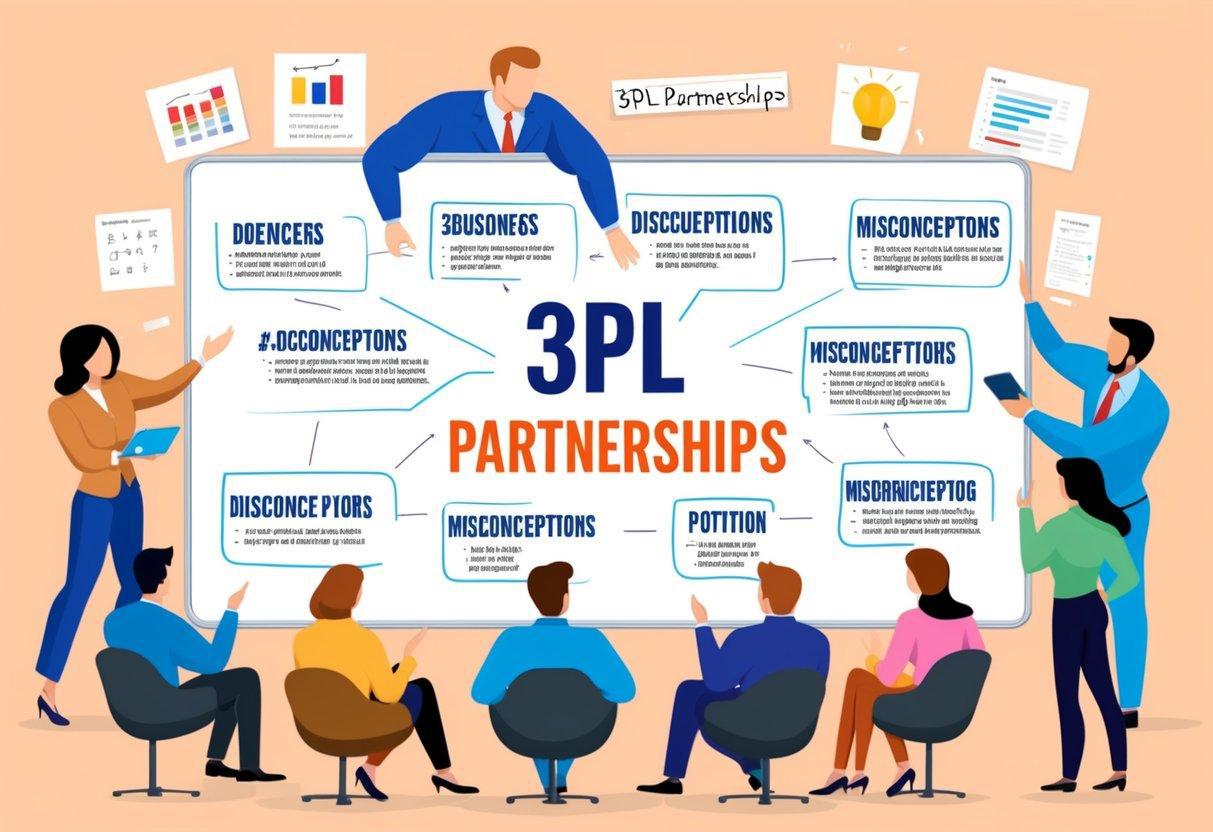
Addressing common concerns helps brands make informed decisions about potential 3PL partnerships.
The Control Question
Many brands worry that outsourcing fulfillment means surrendering control over a critical part of their customer experience. In reality, the right 3PL partner enhances control through better visibility, consistent processes, and regular communication.
Quality 3PL providers serve as extensions of your team, maintaining open communication channels and establishing clear protocols for handling special situations. This collaborative approach delivers more consistent operations than managing logistics in-house with limited resources and divided attention.
Understanding Pricing and Value
Concerns about costs and hidden fees prevent some brands from exploring 3PL partnerships. While pricing structures vary among providers, partners committed to transparency outline their complete fee structure upfront without surprising charges.
Working with a 3PL that offers transparent pricing allows you to forecast fulfillment costs accurately based on your sales projections. Many brands discover that the total cost of outsourcing is lower than maintaining in-house operations when accounting for all direct and indirect expenses—including the opportunity cost of time spent managing logistics rather than growing the business.
Ecommerce 3PL FAQs
What does 3PL stand for?
3PL stands for Third-Party Logistics. It refers to outsourcing logistics services such as warehousing, order fulfillment, and transportation to an external provider.
Is 3PL the same as dropshipping?
No, 3PL is not the same as dropshipping. 3PL handles storage, packing, and shipping for businesses that own inventory, while dropshipping involves a retailer selling products without holding inventory, with suppliers shipping orders directly to customers.
How do 3PLs make money?
3PLs make money by charging fees for storage, order fulfillment, shipping, and value-added services like kitting, returns management, and inventory management. Some use volume-based pricing, while others charge per transaction or storage space used.
What is the difference between 3PL and FBA?
The main difference between 3PL and FBA (Fulfillment by Amazon) is that 3PL services are independent logistics providers for multiple businesses, while FBA is Amazon’s in-house fulfillment service for sellers using the Amazon marketplace.
What is the 3PL delivery process?
The 3PL delivery process includes receiving inventory, storing products, picking and packing orders, shipping, and handling returns. It ensures efficient order fulfillment and last-mile delivery.
Drive Your Brand’s Growth with the Right 3PL Partner
The right e-commerce 3PL partnership empowers your brand to grow by managing the complexity of order fulfillment, allowing you to focus on creating more orders rather than worrying about filling them.
By partnering with specialists, you gain access to expertise, infrastructure, and technology that would be costly to develop internally. This translates to faster shipping, more accurate fulfillment, and a better overall customer experience—factors that directly impact customer loyalty and repeat purchases.
As your business evolves, your 3PL partner should adapt alongside you, scaling services to meet changing needs while maintaining consistent performance. This flexibility supports sustainable growth without the operational bottlenecks that typically constrain expanding brands.
Ready to explore how a customer-focused 3PL partnership could transform your e-commerce operations? Contact Innovative Warehouse Solutions for a personalized consultation. Our team specializes in helping small to mid-sized brands overcome fulfillment challenges with transparent, reliable service that supports your growth journey.
Warehouse Organization: Proven Systems That Boost Operational Efficiency
Warehouse organization forms the backbone of successful logistics operations, yet many businesses struggle to create systems that truly enhance productivity.
For operations managers and business owners, a disorganized warehouse leads to costly inefficiencies, picking errors, and fulfillment delays that impact your bottom line.
Thankfully, this guide explores proven warehouse organization strategies that transform chaotic spaces into streamlined operations centers. When implemented correctly, these strategies complement order fulfillment solutions that drive sustainable business growth.
Understanding Warehouse Organization
Warehouse organization refers to the systematic arrangement and management of space, inventory, equipment, and personnel within a warehouse facility.
It goes beyond simply keeping things tidy—proper warehouse organization creates logical systems that support efficient product flow from receiving to shipping. An organized warehouse minimizes wasted movement, reduces search time, and creates predictable processes that staff can follow consistently.
The impact of organization on warehouse operations is substantial. Research shows that workers in disorganized warehouses spend up to 60% of their time walking and searching for items, reducing productivity.
By contrast, well-organized facilities can process orders up to 40% faster while maintaining higher accuracy rates. This efficiency directly translates to lower operational costs and improved customer satisfaction through faster, more reliable fulfillment.
For businesses experiencing growth or seasonal fluctuations, proper organization also provides the scalability needed to handle volume increases without proportional increases in labor or space requirements.
Key Principles of Effective Warehouse Organization

Successful warehouse organization rests on three fundamental principles that guide all improvement efforts:
Layout Optimization
The physical arrangement of your warehouse serves as the foundation for all operational efficiency. An optimized layout minimizes travel distances, eliminates bottlenecks, and creates logical workflow patterns. This principle focuses on strategic placement of receiving areas, storage zones, packing stations, and shipping docks to create the most efficient path for products moving through your facility.
Effective layouts consider not just the horizontal space but also vertical opportunities. Many warehouses underutilize vertical space, essentially paying for cubic footage they’re not using. Properly designed layouts also account for seasonality and inventory fluctuations, creating flexible spaces that can adapt to changing business needs.
Inventory Management
Even the best physical layout fails without proper inventory management systems. This principle focuses on knowing what you have, where it’s located, and how it moves through your facility. Effective inventory management includes categorization strategies, clear bin location identification systems, and inventory tracking protocols.
Modern warehouse organization increasingly relies on digital inventory management systems that provide real-time visibility and accurate stock levels. These systems reduce manual counting errors, prevent stockouts, and optimize reordering processes. For businesses handling orders across multiple channels, robust inventory management becomes particularly crucial for maintaining consistency.
Workflow Efficiency
The third principle addresses how work gets done within the organized space. Workflow efficiency examines processes like receiving, putaway, picking, packing, and shipping to eliminate redundancies and streamline operations. This includes standardizing procedures, optimizing task sequencing, and using appropriate technology where beneficial.
Efficient workflows also consider ergonomics and safety, ensuring that physical movements required from staff are both safe and productive. Warehouses with efficient workflows typically maintain organization through regular maintenance and continuous process improvement.
Optimizing Your Warehouse Layout
The physical arrangement of your warehouse impacts every aspect of your operation, from labor productivity to inventory accuracy.
Organize Floor Plan for Optimal Flow
The ideal warehouse floor plan creates a logical, sequential flow that minimizes unnecessary movement and maximizes productivity. Start by analyzing your current operations, identifying high-traffic areas, bottlenecks, and workflow interruptions. The most efficient layouts typically follow either a U-shaped, I-shaped, or L-shaped flow pattern, depending on your building configuration and business needs.
For most operations, receiving and shipping areas should be positioned to prevent cross-traffic and confusion. High-velocity items deserve prime locations with easy access, while slower-moving inventory can occupy more remote locations. Consider grouping complementary products together to streamline picking for common order combinations.
When redesigning your layout, create a detailed schematic rather than making changes incrementally. This comprehensive approach prevents having to repeatedly shift inventory and equipment as you realize downstream impacts of earlier changes. Digital modeling tools can help visualize different layout design options before implementing physical changes.
Utilizing Vertical and Horizontal Space
Maximizing warehouse space utilization requires thinking three-dimensionally. Many facilities operate at less than 50% of their potential capacity because they fail to effectively use vertical space. Modern rack systems can safely extend storage capabilities upward, increasing capacity without expanding your facility’s footprint.
When selecting storage solutions, consider these options based on your inventory characteristics:
- Selective rack systems: Offers 100% accessibility to all pallets
- Double-deep racking: Increases density by storing pallets two-deep
- Drive-in rack structures: Maximizes density for similar products
- Push-back rack configurations: Combines density with good accessibility
- Pallet flow rack systems: Ideal for high-volume operations with FIFO requirements
- Cantilever rack options: Perfect for long items like apparel racks or building materials
For smaller items, consider mezzanine installations that create additional floor space above existing operations. These structures effectively double your warehouse space in specific areas without the costs of facility expansion.
Horizontal space optimization involves analyzing aisle width relative to your material handling equipment. Many warehouses use aisles wider than necessary, wasting valuable storage space. Right-sizing aisles for your specific forklifts or order pickers can reclaim substantial floor space for additional storage bins and shelving.
Labeling and Signage for Navigation
Even the most logical layout fails without clear navigation systems. Comprehensive labeling and signage transform your warehouse organization from confusing to intuitive, reducing training time and preventing errors.
Implement a consistent location identification system that clearly marks every storage position. Most warehouses benefit from alphanumeric systems that identify zones, aisles, bays, levels, and positions (e.g., A-03-B-2). Whatever system you choose, ensure it’s simple enough for new employees to understand quickly yet detailed enough to pinpoint exact locations.
Beyond location markers, consider these signage best practices:
- Use color coding to distinguish different warehouse departments
- Install overhead directional signs at aisle intersections
- Place safety signage in prominent locations
- Mark floor paths with tape to indicate traffic patterns
- Install digital displays for dynamic information when appropriate
Barcode or QR code labels at each bin location enable digital scanning and verification, reducing put-away and picking errors. These digital markers integrate with warehouse management systems to provide real-time location validation.
For larger facilities, creating physical and digital warehouse maps helps new staff navigate efficiently during their onboarding period. These maps should highlight main thoroughfares, department boundaries, and key operational areas.
Inventory Management Strategies

Strong warehouse organization depends on systematic inventory management approaches that provide accuracy, visibility, and control.
Classify and Slot Inventory Efficiently
Not all inventory demands equal treatment. Effective warehouse organization starts with classifying inventory based on movement patterns, value, and size to determine optimal storage locations. The most common classification method is ABC analysis:
- A items: High-value or fast-moving products (typically 20% of items that generate 80% of revenue)
- B items: Moderate-value or moderate-velocity products
- C items: Low-value or slow-moving products (typically 50% of items that generate only 5% of revenue)
This classification system guides slotting decisions—determining where each product should be stored within your warehouse. A items deserve premium locations with shortest travel distances, while C items can occupy less accessible spaces. One distribution center reduced travel time by 30% after implementing this approach.
Beyond movement frequency, consider complementary slotting that places frequently ordered items near each other. Size-based slotting groups similar-sized items together to maximize space utilization and reduce damage. Weight-based slotting keeps heavier items on lower levels for safety and efficiency.
Seasonal goods require flexible slotting strategies, with temporary prime locations during peak seasons and secondary storage during off-seasons. Creating designated overflow areas helps manage inventory surges without disrupting your core organization system.
For businesses handling consumer goods like apparel, cosmetics, or specialty food and beverage products, slotting becomes particularly important for maintaining picking efficiency and accuracy. Companies managing health and beauty logistics often require specialized organization systems due to product sensitivity and precise inventory control requirements.
Automating Inventory Tracking
Manual inventory processes invite human error and consume valuable labor hours. Modern warehouse organization relies on automation tools that provide real-time inventory visibility and tracking capabilities.
Warehouse Management Systems (WMS) serve as the central nervous system for organized warehouses, tracking inventory movements, optimizing storage locations, and directing work activities. Even basic WMS functionality improves inventory accuracy and reduces labor requirements for routine tasks.
Barcode scanning technology remains the foundation of automated tracking, providing simple yet effective verification at each inventory touchpoint. For operations handling chemical products or other regulated goods, these systems ensure proper rotation and compliance with storage requirements.
Weekly cycle counting programs replace disruptive full physical inventories with ongoing verification processes. By counting small sample sections of inventory regularly, you maintain accuracy while avoiding operational shutdowns. Automated systems can generate cycle count tasks based on value, discrepancy history, or time since last count.
Perpetual inventory systems that update in real-time prevent the lost sales and expedited shipping costs associated with unexpected stockouts. These systems also optimize reordering timing and quantities, preventing excess inventory that consumes valuable warehouse space.
For third-party logistics providers handling multiple client inventories, integrations with client systems provide seamless visibility and control across the entire supply chain. Having proper warehouse organization systems becomes even more critical during high-volume periods, as outlined in our guide to overcoming Black Friday supply chain challenges.
Enhancing Workflow and Productivity

Even the best-organized warehouse space requires efficient operational workflows that maximize productivity.
Implement Efficient Picking and Packing Methods
Picking operations typically consume 50-65% of warehouse labor costs, making them the primary target for efficiency improvements. Several picking methodologies can improve productivity:
- Zone picking: Assigns workers to specific warehouse areas, reducing travel time
- Batch picking: Combines multiple orders into single picking runs for similar items
- Wave picking: Organizes picking activities into scheduled waves that optimize labor allocation
- Cluster picking: Allows picking multiple orders simultaneously with multi-compartment carts
The right methodology depends on your order profiles, inventory characteristics, and facility layout. Many warehouses use hybrid approaches for different product categories or order types.
Technology enhances picking efficiency through pick-to-light systems, voice-directed picking, or mobile scanning devices that provide clear instructions and verification. These technologies reduce training time while improving accuracy rates.
Packing stations benefit from organization principles that place materials and tools at optimal reach distances. Using standardized packing workflows with clear visual guides reduces errors and ensures consistent presentation. Product presentation matters—particularly for retail or event merchandise that must arrive in perfect condition.
For operations shipping diverse product sizes, calculating dimensional weight at packing stations helps select the most cost-effective shipping methods and packaging options. This is especially important for businesses looking to calculate shipping cost per item accurately.
Safety and Ergonomics in the Workplace
Safety and ergonomics directly impact warehouse productivity and organization. Disorganized spaces create hazards that lead to injuries, downtime, and increased insurance costs. Well-designed workstations and procedures prevent these issues while improving efficiency.
Implement these ergonomic principles throughout your warehouse:
- Position frequently accessed items between waist and shoulder height
- Minimize lifting by using gravity-fed conveyors and adjustable workstations
- Provide anti-fatigue mats in stationary work areas
- Design workflows that alternate physical tasks to prevent repetitive strain
- Train staff on proper lifting techniques and body mechanics
Regular safety audits should identify potential hazards from improper storage, blocked pathways, or damaged equipment. Address these issues immediately to maintain both organization and safety standards.
Clear floor marking systems designate walking paths separate from equipment operations, reducing accident risks while improving traffic flow. Dedicated storage areas for material handling equipment prevent disorganized parking that blocks access to inventory or creates collision risks.
Maintaining an Organized Warehouse

The true challenge of warehouse organization isn’t creating initial systems but maintaining them over time against the constant pressures of daily operations.
Schedule Regular Cleanings and Inspections
Cleanliness directly impacts warehouse organization, safety, and operational efficiency. Develop scheduled cleaning routines for different warehouse areas, with clear responsibility assignments and verification procedures. Daily and weekly cleaning of active work areas prevents accumulation of packaging waste, damaged products, and other debris that degrades organization.
Regular equipment maintenance prevents unexpected breakdowns that disrupt workflows and force temporary storage compromises. Create preventive maintenance schedules for rack systems, warehouse shelving, material handling equipment, and facility infrastructure like lighting and HVAC systems.
Implement routine organization audits that evaluate adherence to your storage systems and slotting rules. These audits should verify that:
- Items remain in their designated bin locations
- Labels and signage remain visible and accurate
- Aisles and work areas remain clear of obstructions
- Storage systems show no signs of damage or wear
- Inventory accuracy meets established standards
Document audit findings with photographs and specific metrics that track organization levels over time. This documentation helps identify recurring issues and measure improvement after corrective actions.
For businesses managing chemical products, regulated goods, or temperature-sensitive items, regular audits become especially important to maintain compliance and product integrity. Those handling specialty items like cosmetics or beverages need particularly rigorous organization systems to ensure product quality and compliance.
Adapting to Evolving Needs
Warehouse organization requires continuous adaptation to changing business conditions. Regularly analyze operational data to identify evolving patterns in inventory profiles, order characteristics, and seasonal demands that might require layout or process adjustments.
Create a formal process for evaluating and implementing organizational improvements, with clear ownership and accountability. This process should include:
- Regular review of key performance indicators related to warehouse organization
- Structured methods for collecting improvement suggestions from floor staff
- Evaluation criteria for assessing potential changes
- Implementation procedures that minimize operational disruption
- Post-implementation review to verify effectiveness
When making changes, use a phased approach that allows testing concepts in limited areas before full-scale implementation. This approach reduces risk while allowing verification of expected benefits.
Organizational structure also matters—clearly defined roles and responsibilities ensure that warehouse organization remains a priority. Many successful warehouses designate organization champions who oversee continuous improvement efforts.
Warehouse Organization FAQs
What are the 4 types of warehouse layout?
The four types of warehouse layout are U-shaped, I-shaped (or straight-through), L-shaped, and modular layouts. U-shaped layouts optimize material flow, I-shaped layouts enhance efficiency for high-throughput operations, L-shaped layouts fit irregular spaces, and modular layouts allow flexibility for expansion.
What is 5S in a warehouse?
The 5S methodology in a warehouse consists of Sort, Set in Order, Shine, Standardize, and Sustain. This system enhances efficiency, safety, and organization by eliminating waste, optimizing workspace, and maintaining cleanliness.
What are the key roles in a warehouse?
Key warehouse roles include Warehouse Manager, Supervisor, Inventory Specialist, Forklift Operator, and Picker/Packer. These roles ensure efficient operations, inventory accuracy, equipment handling, and order fulfillment.
What is warehouse organization structure?
A warehouse organization structure defines roles, responsibilities, and workflow. It typically includes management, inventory control, receiving, storage, picking, packing, and shipping teams to streamline operations and maintain efficiency.
What are the four factors of warehouse design?
The four key factors of warehouse design are space utilization, workflow efficiency, accessibility, and safety. These elements influence storage capacity, material handling, employee movement, and overall operational effectiveness.
Transparent Warehouse Organization: The IWS Approach
At Innovative Warehouse Solutions, we believe that warehouse organization should be transparent, customer-focused, and directly tied to your business success. Our approach differs from traditional warehousing providers in several key ways:
Real-Time Visibility and Communication
Unlike many warehousing providers that offer limited visibility into your inventory, we provide real-time access to inventory levels, storage locations, and movement histories. This transparency lets you make informed business decisions without delays or surprises.
Our clients receive regular updates on inventory accuracy rates, order processing metrics, and storage utilization—not just when problems arise, but as part of our standard communication process. This proactive approach eliminates the frustration of discovering issues after they’ve already impacted your customers.
Customer-Focused Organization Systems
Many warehousing services organize their facilities for their own convenience rather than yours. At IWS, we design our organization systems around your specific business needs, product characteristics, and order patterns.
For health and beauty businesses, this might mean specialized storage areas for temperature-sensitive formulations. For apparel companies, it could involve custom rack configurations that prevent garment damage. For food and beverage clients, it means organization systems that ensure proper lot tracking and FIFO rotation.
Understanding the true cost of self-fulfillment helps many businesses recognize the value of partnering with a 3PL that offers optimized warehouse organization. Our strategic warehousing approach focuses on creating customized solutions that address your specific business challenges.
Scalable Solutions That Grow With You
Traditional warehouse organization often breaks down during growth periods or seasonal spikes. Our flexible organization systems scale with your business, whether you’re handling 300 monthly orders or experiencing rapid expansion.
We regularly reassess slotting assignments, layout configurations, and workflow patterns based on changing order volumes and product mixes. This continuous optimization ensures that your fulfillment efficiency improves—rather than declines—as your business grows.
The warehousing industry continues to evolve with new technologies and approaches. For businesses interested in learning more about advanced concepts that complement strong warehouse organization, our guide to cross docking offers insights into streamlined product movement strategies. Beyond physical organization, understanding fulfillment costs is essential for making informed decisions about your warehouse operations and resource allocation.
Ready to transform your warehouse operations with proven organization systems? Contact us today for a personalized consultation and discover how our transparent, customer-focused approach can help your business achieve its efficiency and growth goals.
Trusted Order Fulfillment Services Focused on Growth
Order fulfillment solutions are the backbone of successful ecommerce businesses, directly impacting how quickly and accurately you deliver products to customers. At Innovative Warehouse Solutions (IWS), we provide tailored fulfillment shipping services designed specifically for small to mid-sized brands with annual revenues of $1M+ who want to grow without operational headaches. Founded in 2018, our boutique approach to ecommerce fulfillment gives you the personal attention that global 3PLs can’t match.
Why Choose Innovative Warehouse Solutions for Order Fulfillment?
Selecting the right fulfillment partner directly impacts your growth potential and customer satisfaction rates.
Customer-First Approach
Unlike larger 3PLs that treat you as just another account number, our team of 15 dedicated professionals provides real-time, personalized support. When you call IWS, you speak with actual team members who know your business—not an offshore call center reading from scripts. This customer-centric service has helped our clients reduce support tickets by 35% compared to their previous fulfillment providers.
Transparent Pricing Without Surprises
Our most frequently received compliment? “Your billing is refreshingly clear.” While many 3rd party fulfillment services bury fees in complex contracts, we provide straightforward pricing with no hidden charges. You’ll know exactly what you’re paying for storage, picking, packing, and shipping—with no surprise fees for account setup, integration, or monthly minimums. This transparency helps you budget accurately and improves your overall profitability.
Industry-Leading Accuracy Guarantees
We back our performance with concrete guarantees: 99.5%+ order accuracy and same-day processing for orders received before cutoff times. These aren’t just marketing claims—we provide monthly accuracy reports and compensate you for any service failures. For health and beauty brands, beverage companies, and lightweight consumer goods manufacturers, this precision protects both your inventory investment and customer relationships.
Technology That Simplifies Complexity
Our proprietary software integrates seamlessly with major ecommerce platforms while providing real-time visibility into inventory levels, order status, and fulfillment metrics. This technology makes data-driven decisions possible, helping you optimize product offerings and marketing strategies based on actual performance. Clients report saving 15-20 hours weekly on inventory management after switching to our system.
Comprehensive Ecommerce Fulfillment Solutions

Modern ecommerce businesses need fulfillment systems that adapt to changing market conditions while maintaining consistent service quality.
When to Consider Third Party Options
Many growing brands hit a fulfillment breaking point: self-fulfillment becomes unsustainable as order volumes increase, but large 3PLs treat small businesses as afterthoughts. The true costs of self-fulfillment extend far beyond warehouse space—our analysis shows business owners typically underestimate fulfillment costs by 30-40% when calculating only direct expenses.
Access to Better Shipping Rates
As a 3rd party fulfillment solution, we process thousands of packages daily across multiple clients, giving us negotiating power with carriers that individual businesses can’t match. These volume discounts translate to 15-25% lower shipping costs compared to standard commercial rates, directly improving your margins without sacrificing delivery speed.
Adapting to Seasonal Fluctuations
Our fulfillment shipping services accommodate seasonal spikes without requiring you to adjust warehouse space or staffing. During Black Friday and holiday rushes, we scale up operations to handle 3-5x normal volumes without additional fees or decreased accuracy. One beverage client successfully launched a summer promotion that generated a 300% order increase with no disruption to their fulfillment operations.
Specialized Handling for Your Products
Our background with health and beauty items, beverages, and lightweight consumer goods means we understand the unique requirements of these products. From temperature-controlled storage for cosmetics to proper handling for glass bottles, our specialized knowledge keeps your products in perfect condition. This expertise has helped beauty brands reduce damage rates by over 70% compared to general-purpose fulfillment providers.
Smart Warehouse Placement for Speed and Savings
The location of your inventory directly affects delivery times and shipping costs—two factors that heavily influence customer satisfaction.
Northeast Location Advantages
Our primary fulfillment center in the Northeast corridor puts your products within one-day ground shipping of 100+ million consumers. This strategic placement reduces transit times and allows late cutoff times (up to 4pm EST for same-day processing), giving your customers faster deliveries without premium shipping costs.
Reducing Shipping Zones and Costs
Proper warehouse positioning dramatically affects shipping costs by reducing the distance packages travel. Our Northeast facility helps companies shipping to East Coast metropolitan areas cut average shipping zones from 5-6 down to 2-3, resulting in typical savings of $1.50-$3.00 per package while improving delivery times by 1-2 days.
Multi-Node Options for Nationwide Coverage
For brands requiring broader coverage, we offer multi-node fulfillment solutions through trusted partner facilities. This network approach maintains consistent service standards while distributing inventory closer to end customers. Our data shows that implementing a two-node strategy (Northeast plus Southwest) can reduce shipping costs by 18% while cutting average delivery times from 3.2 to 1.8 days nationwide.
Optimized Inventory Distribution
Our proprietary analysis tools determine the ideal inventory distribution across locations based on your customer demographics and ordering patterns. This data-driven approach places the right products in the right locations, balancing carrying costs against shipping expenses to minimize your total fulfillment cost.
Operational Excellence in Order Processing

Behind every successful shipment is a refined process built on quality controls and efficiency.
The IWS Fulfillment Process
Our fulfillment process prioritizes accuracy through a series of quality checkpoints:
- Receiving & Inspection: All inventory undergoes detailed inspection against expected quantities and quality standards
- Strategic Storage: Products are placed in optimized locations based on size, fragility, and picking frequency
- Systematic Picking: Orders are grouped for maximum efficiency while maintaining accuracy through barcode verification
- Quality Control: Each order undergoes a secondary verification before packaging
- Customized Packaging: Orders are packed according to your specifications, including branded materials when provided
- Carrier Selection: Our system automatically selects the optimal shipping method based on cost, speed, and reliability
Our effectiveness stems from more than just technology—we implement proven warehouse organization systems that minimize wasted movement and maximize processing speed. These organizational principles allow our team to maintain high accuracy while processing thousands of orders daily.
Handling Returns with Care
Returns represent a critical touchpoint in the customer journey. Our returns management process includes detailed condition assessment, prompt restocking of sellable items, and regular reporting on return reasons. This systematic approach turns returns from a pain point into valuable product and customer data.
Real-Time Communication
Communication failures cause many customer service issues in ecommerce. Our system provides automated updates at key fulfillment milestones directly to both you and your customers. This transparency prevents issues before they occur and provides immediate information when questions arise.
Special Handling Options
High-value or fragile items receive additional care through our white glove fulfillment services. These include double-boxing, additional cushioning materials, shipping insurance, signature confirmation, and specialized carriers for particularly valuable merchandise.
Financial Benefits of Professional Fulfillment
Beyond operational improvements, working with a fulfillment partner delivers significant financial advantages.
From Fixed Costs to Variable Expenses
Self-fulfillment locks you into fixed costs for warehouse leases, equipment, and core staff regardless of volume fluctuations. Our fulfillment solution turns these fixed expenses into variable costs that scale with your activity. This flexibility improves cash flow and allows you to navigate seasonal changes without financial strain.
Focus on Revenue-Generating Activities
Perhaps the greatest economic benefit comes from redirecting internal resources away from logistics management. When your team concentrates on product development and marketing instead of packing orders, your business grows more efficiently. One client reported launching two new product lines six months ahead of schedule after outsourcing their fulfillment operations.
Capital-Efficient Growth Model
Traditional fulfillment models consume substantial capital as businesses scale, diverting resources from growth opportunities. Our order fulfillment solution eliminates this capital burden, allowing you to invest in revenue-generating activities instead of infrastructure. This approach preserves your financial flexibility and improves key financial metrics like return on invested capital.
Quantifiable Cost Savings
Our clients typically report three types of cost savings after switching to our services:
- Direct Savings: 15-30% reduction in shipping costs, elimination of warehouse lease expenses
- Operational Savings: 20-40% reduction in fulfillment labor costs, decreased packaging expenses
- Opportunity Gains: Accelerated product launches, improved conversion rates from better delivery promises
Order Fulfillment Solutions FAQs
What are the 7 steps of the order fulfillment process?
The 7 steps of the order fulfillment process include receiving inventory, storage, order processing, picking, packing, shipping, and returns management. Each step ensures efficient order handling and customer satisfaction.
What is order fulfillment KPI?
Order fulfillment KPIs measure efficiency and accuracy. Key KPIs include order accuracy rate, on-time delivery rate, fulfillment cycle time, inventory turnover, and return rate. These metrics track performance and customer satisfaction.
What is the perfect order fulfillment?
Perfect order fulfillment occurs when an order is delivered on time, complete, undamaged, and with accurate documentation. It minimizes errors and maximizes customer satisfaction.
What is a good order fulfillment rate?
A good order fulfillment rate is 95% or higher. This indicates that the majority of orders are processed accurately and delivered on time, reducing delays and errors.
How do you manage order fulfillment?
Manage order fulfillment by optimizing inventory management, automating order processing, streamlining warehouse operations, and working with reliable shipping partners. Continuous monitoring and process improvement enhance efficiency.
Take the Next Step with Professional Order Fulfillment
Now is the time to evaluate how your current fulfillment operations impact your business growth. Are shipping delays frustrating your customers? Is your team spending valuable hours packing orders instead of growing your brand?
Innovative Warehouse Solutions offers a proven ecommerce fulfillment solution with transparent pricing, documented accuracy rates, and personalized customer service. Our system specifically serves brands with $1M+ revenue looking to scale without the operational complexities of traditional fulfillment.
Here’s how to get started:
- Contact us for a no-obligation consultation focused on your specific needs
- Receive a clear, comprehensive quote with no hidden fees or long-term commitments
- Experience our smooth onboarding process with dedicated support from actual team members
- Watch your customer satisfaction increase while your operational workload decreases
Let Innovative Warehouse Solutions handle your order fulfillment while you focus on what you do best—growing your brand and creating amazing products.
Excess Inventory Management: The Smart Guide for Small Businesses
Excess inventory management is a critical challenge for growing businesses today. When your warehouse shelves overflow with unsold products, your capital gets tied up, storage costs rise, and products risk becoming obsolete. For business owners juggling multiple responsibilities, inventory overload can transform from a minor concern into a major financial burden.
This guide examines why businesses accumulate too much stock and how this affects your bottom line. You’ll discover practical strategies to optimize your inventory levels, free up valuable resources, and position your business for sustainable growth without the weight of excess stock holding you back.
Understanding Excess Inventory
What is excess inventory? It refers to stock that exceeds your business’s current demand or sales capacity. This extra stock represents capital that could support other areas of your business but instead sits idle on warehouse shelves. While inventory excess affects businesses of all sizes, smaller operations feel the impact more acutely due to tighter cash flow constraints.
Managing excess inventories directly impacts your bottom line. Proper inventory management ensures you maintain just enough stock to meet customer demand without unnecessary capital investment. When you minimize excess stock, you improve cash flow, reduce storage costs, and create opportunities for strategic investments that drive growth.
For businesses with limited resources, smart inventory management can make the difference between constant financial pressure and having the flexibility to pursue new opportunities.
Causes of Excess Inventory

Understanding why excess inventory accumulates helps you prevent it from happening in the first place.
Overoptimistic Demand Forecasting
Many businesses order based on best-case sales scenarios rather than realistic projections. When actual customer demand falls short of these optimistic forecasts, inventory levels grow beyond what you need. This problem worsens when you rely on outdated sales data that doesn’t account for current market trends or when you overlook seasonal variations that affect purchasing patterns.
Supply Chain Disruptions
Ironically, supply chain uncertainties often lead to stock excess. When you experience delays or disruptions, the natural response is to over-order as a safety buffer.
While this approach aims to prevent stockouts, it often creates excessive inventory once normal operations resume. Poor communication with suppliers makes this worse, as misalignment between your needs and delivery schedules creates inventory imbalances.
Production Misalignments
For businesses that manufacture their own products, misalignment between production and sales leads to inventory buildup. Without coordination between production schedules and actual sales data, you may continue making items at volumes exceeding current demand. This disconnect happens when production teams lack real-time visibility into sales performance or when manufacturing processes can’t quickly adjust to changing market conditions.
Bulk Purchasing Incentives
Volume discounts tempt many businesses into buying more than they need. While these discounts reduce per-unit costs, they often result in excess inventory that costs more in the long run. Smart inventory management requires calculating the true cost of holding additional stock against the immediate savings. Many businesses discover that storage costs, tied-up capital, and obsolescence risk make bulk purchases less advantageous than they first appear.
Ineffective Inventory Management Practices
At the root of many excess inventory situations are basic operational issues. Without robust tracking systems, you’ll struggle to maintain optimal stock levels. Manual inventory counts lead to errors and unnecessary reordering. Disorganized warehouses compound the problem, as items become hard to locate and get reordered despite being present in your facility. These fundamental issues can undermine even the most carefully planned inventory strategy.
Consequences of Excess Inventory

The impact of too much stock extends beyond just taking up space. Here’s how excess inventory affects your business operations and financial health.
Financial Impact and Cash Flow Constraints
Excess inventory ties up your working capital in products that aren’t generating revenue. Every dollar invested in unnecessary stock is unavailable for marketing, equipment upgrades, or business expansion. For businesses with limited resources, this capital constraint can severely restrict growth opportunities.
The true cost of excess inventory goes beyond the initial purchase price. Carrying costs—including storage, insurance, taxes, and depreciation—add up to 20-30% of inventory value annually. These ongoing expenses directly reduce your profit margins and limit your pricing flexibility in competitive markets.
Storage Costs and Operational Inefficiency
Warehouse space comes at a premium in today’s market. The more stock you store, the higher your facility costs climb. Beyond physical space, excess stock requires additional labor hours for handling, organizing, and monitoring—all non-value-adding activities that increase your operational expenses.
Overstocked warehouses create inefficient workflows that slow down your entire operation. When your team must navigate crowded aisles or search through excessive stock to locate specific items, picking times increase and shipping delays become more common. These inefficiencies damage customer relationships and create a negative cycle where poor service leads to fewer sales, making your inventory problem even worse.
Product Obsolescence and Market Responsiveness
Products sitting in warehouses for extended periods face obsolescence risk—especially in fast-moving industries where consumer preferences evolve rapidly. Technology products, fashion items, and seasonal goods are particularly vulnerable. Even products with longer shelf lives may deteriorate in quality, potentially resulting in returns or customer dissatisfaction.
Excess inventory also limits your ability to respond to market changes. When your capital and warehouse space are tied up in slow-moving products, you can’t quickly pivot to new opportunities or product lines. This lack of agility puts you at a competitive disadvantage in markets where rapid response to consumer trends drives success.
Strategies for Managing and Preventing Excess Inventory
Now that you understand the causes and costs of inventory overload, let’s explore practical solutions to address this challenge.
Smart Technology and Software Solutions
Modern inventory management requires tools that provide real-time visibility into your stock levels. Implementing effective warehouse management systems allows you to track inventory with precision that manual methods can’t match. These systems can flag slow-moving products, identify reorder points, and highlight potential overstock situations before they become problems.
For small to mid-sized businesses, cloud-based solutions offer enterprise-level functionality without major IT investments. Look for systems that offer:
- Real-time inventory tracking across all sales channels
- Automated reorder point calculations based on sales velocity
- Early warning alerts for potential excess inventory situations
- Integration with your e-commerce platforms and accounting software
Barcode scanning and RFID technology improve inventory accuracy by eliminating counting errors. These technologies sync with your inventory management software to provide continuous, accurate stock level information.
A health and beauty brand we work with reduced their excess inventory by 32% within six months of implementing our recommended inventory management solution. The system flagged slow-moving product variants they hadn’t noticed were accumulating, allowing them to run targeted promotions before the products became obsolete.
Data-Driven Demand Forecasting
Accurate demand forecasting forms the foundation of effective inventory management. By analyzing your historical sales data alongside market trends and seasonal factors, you can make smarter predictions about future needs.
The most effective forecasting approaches include:
- Analyzing product-specific sales patterns rather than just overall sales volumes
- Accounting for seasonality and promotional impact on demand
- Incorporating market trend data for your industry
- Regularly comparing forecast accuracy against actual results
ABC analysis helps prioritize your inventory management efforts. This approach categorizes your products based on their importance to your business:
- “A” items: The 20% of products that generate 80% of your revenue
- “B” items: Products with moderate sales and profitability
- “C” items: Low-value products that make up the majority of inventory items
By tailoring your management approach to each category—with tighter controls on high-value “A” items and more relaxed systems for “C” items—you can focus your attention where it matters most.
Just-In-Time Inventory Approaches
The Just-In-Time (JIT) inventory approach reduces excess stock by synchronizing ordering and delivery with your actual needs. Rather than keeping extra “just in case,” JIT systems aim to have products arrive “just in time” for when you need them.
While implementing a complete JIT system requires careful planning, even partial adoption can improve your inventory efficiency. Start with your most stable, predictable product lines where supply chain disruptions are less likely.
Small parcel fulfillment strategies complement JIT approaches by enabling more frequent deliveries of smaller quantities. This approach allows you to maintain lower overall inventory while still meeting customer demands promptly.
A beverage company we partner with shifted to a modified JIT approach for their non-seasonal products. They maintained minimal safety stock while implementing more frequent, smaller deliveries. The result was a 40% reduction in warehouse space requirements and improved cash flow that funded their new product development.
Building Collaborative Supplier Relationships
Your suppliers play a crucial role in inventory management success. By developing strong relationships with key vendors, you can negotiate more flexible terms that support your inventory goals.
Consider these supplier partnership strategies:
- Arrange smaller, more frequent deliveries instead of large quarterly shipments
- Explore vendor-managed inventory programs where appropriate
- Negotiate consignment arrangements for high-value or slow-moving items
- Share your sales forecasts to help suppliers plan their production
When selecting suppliers, prioritize reliability and flexibility alongside price. The cheapest supplier becomes expensive if their unreliability forces you to keep extra safety stock. For critical products, develop relationships with multiple suppliers to reduce disruption risks.
Regular Inventory Audits and Controls
Consistent inventory audits help identify discrepancies between your records and actual stock levels. Regular inventory reconciliations are essential for revealing slow-moving products that might need promotional efforts or price adjustments.
Instead of disruptive full-warehouse counts, consider cycle counting—auditing different sections of inventory on a rotating basis. This approach provides continuous verification while minimizing operational disruptions.
During audits, pay attention to:
- Products approaching obsolescence or expiration dates
- Items with damaged packaging that might need repackaging
- Products stored in inefficient locations
- Discrepancies between physical counts and system records
A proactive audit program helps you catch inventory issues early, before they grow into major excess stock problems.
Alternative Sales Channels for Existing Excess
When prevention efforts fall short and you find yourself with excess inventory, exploring alternative sales channels can help recoup your investment and free up warehouse space.
Online marketplaces provide access to new customer segments that might value products no longer moving through your primary channels. Flash sales or special promotions can generate interest in overstocked items while preserving your brand value better than permanent discounting.
For seasonal products, consider selling to international markets where seasons differ from your primary location. Summer products facing excess inventory challenges in December might still command full price in southern hemisphere markets.
If you’re dealing with excess inventory in health and beauty products, specialty closeout retailers often purchase these items at better margins than general liquidators, especially if the products have reasonable remaining shelf life.
Excessive Inventory Management FAQs
How to measure excess inventory?
Measure excess inventory by comparing actual stock levels to optimal inventory levels. Use key metrics like inventory turnover ratio, days of inventory on hand, and demand forecasts. Identify slow-moving or obsolete stock to assess excess inventory accurately.
What is the KPI of inventory management?
The key performance indicators (KPIs) of inventory management include inventory turnover ratio, stockout rate, carrying cost of inventory, and order accuracy. These KPIs measure efficiency, cost-effectiveness, and demand fulfillment.
Why is excess inventory considered waste?
Excess inventory is considered waste because it ties up capital, increases storage costs, and risks obsolescence. Unused stock can lead to depreciation, inefficiency, and lost revenue, reducing overall profitability.
What is an example of excess inventory?
An example of excess inventory is a retailer overstocking winter coats beyond demand, leading to unsold products that require discounts or disposal. This results in financial loss and wasted storage space.
How do you measure excess inventory?
Measure excess inventory by calculating the difference between current stock and projected demand. Use historical sales data, reorder points, and inventory turnover rates to determine excess stock levels.
Take Action: Partner with Experts to Optimize Your Inventory
Effective inventory management is a competitive advantage in today’s business environment. The strategies outlined in this guide provide a roadmap for transforming your approach to inventory control.
Next, consider which solutions make the most sense for your business size and industry:
- For businesses selling health and beauty products: Implement a robust batch tracking system to monitor shelf-life and quality control
- For beverage companies: Consider JIT approaches combined with strategic safety stock
- For businesses with lightweight consumer goods: Explore technology solutions that improve inventory visibility
Here’s the thing: you don’t have to tackle inventory challenges alone. Many businesses find that partnering with an experienced 3PL provider offers the fastest path to improvement.
At Innovative Warehouse Solutions, we help businesses like yours optimize inventory without the complexity and cost of building systems from scratch. Our inventory provider services deliver measurable results through an approach that includes:
- Complete transparency in pricing with no hidden fees
- Real-time inventory visibility through our advanced management systems
- Personalized support from a dedicated team who understands your business
- Flexible storage options that scale with your needs
The benefits of optimizing your inventory management extend far beyond just reducing excess stock. Improved cash flow enables investment in growth opportunities. Enhanced operational efficiency creates better customer experiences through faster fulfillment and fewer stockouts.
Ready to transform your inventory management approach? Contact Innovative Warehouse Solutions today for a no-obligation consultation. We’ll help you identify opportunities to reduce excess inventory while maintaining the service levels your customers expect.
Batch Tracking: What Growing Businesses Need to Know
Batch tracking gives you precise control over inventory groups from production to delivery—a critical capability when managing multiple product lines.
For growing brands struggling with inventory visibility, product quality issues, or compliance requirements, a batch tracking solution can transform these challenges into strengths. Without effective batch management, you risk expensive recalls, compliance violations, and inventory inefficiencies that damage both profitability and reputation.
This guide explains how implementing the right batch tracking system helps your business maintain quality standards, meet regulatory obligations, and build customer trust while freeing you to focus on creating more orders instead of managing operational complexities.
Understanding Batch Tracking
Batch tracking monitors groups of products manufactured together under identical conditions. Unlike basic inventory counting, batch tracking assigns unique identifiers to specific product groups, following them from production through distribution to the end consumer.
A batch tracking system captures vital data points including:
- Manufacturing date and location
- Raw material sources and suppliers
- Expiration dates
- Quality control test results
- Storage conditions
- Distribution pathways
This detailed tracking creates a comprehensive history for each product batch, allowing you to trace products forward to customers or backward to suppliers when needed.
Implementing batch inventory management delivers multiple competitive advantages beyond basic compliance:
- Quality Control and Customer Confidence: When quality issues arise, batch tracking lets you quickly identify and isolate affected products. Instead of questioning your entire inventory, you can pinpoint exactly which production run experienced problems—saving you money while protecting your brand reputation.
- Targeted Recall Management: Without batch tracking, a single product issue could require a total recall of everything you’ve shipped. With proper batch identification, you can precisely target just the affected items, dramatically reducing recall scope and cost while demonstrating responsible business practices to your customers.
- Inventory Optimization: A batch tracker provides the granular insights needed to reduce waste from expired products. By monitoring expiration dates at the batch level, you can implement inventory rotation strategies that prioritize older stock, cutting costly write-offs and improving cash flow.
- Simplified Compliance: Many industries face strict traceability requirements that become overwhelming without proper systems. Food producers must meet FDA regulations, pharmaceutical companies follow GMP standards, and cosmetics manufacturers adhere to various safety protocols. Batch tracking transforms compliance from a burden into a straightforward operational process.
Industries Benefiting from Batch Tracking

While batch tracking adds value across numerous sectors, three industries find it particularly vital due to their unique challenges.
Food and Beverage
Food and beverage brands face intense pressure to maintain freshness, safety, and quality. Batch tracking software helps these businesses:
- Rotate inventory based on expiration dates to minimize spoilage
- Track ingredients back to their sources for quality verification
- Meet FDA Food Safety Modernization Act requirements
- Respond rapidly to contamination with targeted recalls
- Provide customers with product freshness information
From craft beverage makers to snack brands, batch tracking delivers the visibility needed to maintain quality while maximizing inventory turnover. For beverage logistics in particular, tracking batch numbers can substantially reduce waste and improve customer satisfaction.
Pharmaceuticals
The pharmaceutical industry operates under the strictest traceability requirements. Pharmaceutical companies rely on batch tracking to:
- Document compliance with Good Manufacturing Practices
- Track active ingredients and potency throughout shelf life
- Monitor temperature and storage conditions during distribution
- Validate product authenticity and combat counterfeiting
- Perform targeted recalls when adverse reactions occur
With lives potentially at stake, pharmaceutical batch tracking systems must maintain flawless accuracy from production through dispensing.
Health and Beauty
Today’s beauty consumers demand unprecedented transparency. Health and beauty brands use batch inventory systems to:
- Monitor product stability throughout the shelf life
- Verify natural and organic ingredient sourcing claims
- Meet regulatory requirements for product safety testing
- Manage formulation variations across different markets
- Address consumer concerns about specific ingredients
For health and beauty logistics, batch tracking provides the data foundation that helps brands build consumer trust while protecting against costly quality issues.
Batch Tracking Strategies
The right inventory rotation approach works hand-in-hand with your batch tracking system to maximize efficiency and minimize waste.
FIFO (First-In, First-Out)
FIFO remains the most widely used inventory strategy for perishable or time-sensitive products. This approach prioritizes shipping older inventory first, making it valuable for:
- Reducing product expiration and waste
- Maintaining consistent product quality
- Supporting accurate cost accounting
- Improving warehouse organization
A well-implemented batch tracking system makes FIFO practical by giving you real-time visibility into manufacturing and expiration dates. For food, beverage, and beauty products, this combination creates a powerful framework for quality control while reducing spoilage costs.
FEFO (First-Expired, First-Out)
FEFO takes a more nuanced approach than FIFO by focusing specifically on expiration dates rather than arrival sequence. This strategy:
- Prioritizes products closest to expiration regardless of when they arrived
- Addresses varying expiration dates within the same product category
- Manages products with different shelf lives more effectively
- Minimizes waste from expired products
For businesses handling pharmaceuticals or food items with significant shelf-life variations, FEFO often proves more effective than strict FIFO. Your batch tracking system supports this by automatically flagging products nearing expiration and prioritizing them for shipment.
LIFO (Last-In, First-Out)
LIFO ships the newest inventory first—a less common approach for physical goods but one with specific applications:
- Non-perishable products with no quality degradation
- Items where newer versions should ship before older ones
- Financial reporting in specific tax jurisdictions
While LIFO has limited applications for physical inventory in most consumer goods industries, it demonstrates how your batch tracking system can support multiple inventory strategies based on your specific business needs.
Implementing Batch Tracking Systems

Moving from concept to practice requires thoughtful planning and the right tools. Here’s how to set up an effective batch tracking system without diverting focus from your core business.
Setting Up Batch Tracking for Your Business
Creating a successful batch tracking implementation involves several key steps:
Define Your Batch Numbering Format
Start with a consistent format for batch identifiers that balances information value with practical considerations:
- Date of production (year/month/day)
- Production facility identifier
- Product code or category
- Sequential numbering for multiple batches
The format should fit your labeling space while containing enough information to be immediately useful for tracking and problem-solving.
Determine Essential Data Points
Identify what information adds the most value for each batch:
- Raw material sources and test results
- Production conditions and quality checks
- Storage locations and environmental factors
- Expiration dates
- Distribution tracking details
Focus on collecting data that directly supports quality control, compliance, and operational efficiency rather than gathering information simply because you can.
Select Appropriate Technology
Modern batch tracking relies on technology that fits your specific needs:
- Barcode or QR code systems for quick batch identification
- Batch tracking software integrated with inventory management
- Mobile scanning capabilities for warehouse staff
- Automated alerts for expiration dates
Many growing brands find that partnering with a 3PL already using batch tracking technology offers faster implementation without capital investment in systems and training.
Establish Clear Procedures
Even excellent technology needs proper human implementation:
- Document all batch tracking processes clearly
- Provide hands-on training for warehouse staff
- Create quality control checkpoints
- Develop protocols for handling exceptions
Staff understanding drives successful batch tracking. Take time to explain not just how the system works but why it matters for your customers and business growth.
Batch Tracking Impact on Your Business
A well-designed batch tracking system delivers substantial returns through multiple operational improvements:
Quality Management That Builds Trust
By monitoring at the batch level, you can:
- Identify issues before they reach customers
- Link customer feedback to specific production runs
- Make targeted improvements to production processes
- Build brand reputation through consistent quality
This granular approach to quality helps maintain product standards while continuously improving your operations based on specific data rather than guesswork.
Simplified Compliance Without Administrative Burden
Batch tracking transforms regulatory compliance from paperwork nightmare to straightforward process:
- Generate required documentation automatically
- Provide traceability reports during inspections
- Demonstrate responsible product handling
- Adapt quickly to new requirements
For businesses in regulated industries, this compliance efficiency alone often justifies the investment in proper batch tracking.
Inventory Control That Preserves Capital
Batch-level visibility transforms how you manage stock:
- Reduce excessive inventories by ordering based on actual turnover rates
- Decrease product waste through better rotation strategies
- Improve picking accuracy and speed when fulfilling orders
- Free working capital previously tied up in unnecessary stock
Advanced batch tracking works hand-in-hand with comprehensive stock management services to give you greater control over your inventory investment. Many businesses also find that regular reconcile inventory procedures become much simpler with proper batch tracking, as discrepancies can be traced to specific product groups rather than investigating entire stock categories.
These inventory improvements directly impact your profitability while creating resources for growth initiatives.
Batch Tracking FAQs
What is the difference between lot tracking and batch tracking?
The main difference between lot tracking and batch tracking is their focus. Lot tracking tracks groups of items based on shared characteristics, ensuring traceability across production. Batch tracking monitors specific production runs, helping with quality control and recalls. Both improve inventory management and compliance.
What is the difference between batch tracking and serial tracking?
The main difference between batch tracking and serial tracking is that batch tracking monitors groups of items produced together, while serial tracking assigns a unique identifier to each item. Batch tracking is used for bulk traceability, while serial tracking provides individual item tracking.
How do I track a batch number?
Track a batch number by recording it in an inventory management system. Use barcode scanning, ERP software, or manual logs to trace the batch through production, storage, and sales. Batch tracking helps with recalls, quality control, and expiration date monitoring.
What are the three methods of tracking inventory?
The three methods of tracking inventory are:
- Perpetual Tracking: Updates inventory in real-time using software.
- Periodic Tracking: Conducts inventory counts at scheduled intervals.
- RFID & Barcode Tracking: Uses scanning technology for accurate tracking.
What is batch monitoring?
Batch monitoring is the process of tracking and analyzing production batches to ensure quality, compliance, and efficiency. It involves monitoring batch numbers, timestamps, and production conditions to detect issues and optimize manufacturing processes.
Conclusion
Effective batch tracking transforms growing businesses from reactive to proactive in managing product quality, compliance, and inventory efficiency. With the right system, you gain the visibility and control needed to reduce costs, minimize waste, and build stronger customer relationships.
Begin by assessing your current tracking capabilities and identifying where lack of batch visibility creates unnecessary risk or inefficiency. Consider starting with high-value or high-risk products where batch tracking will deliver immediate benefits before expanding to your full product line.
For many growing brands, the fastest path to effective batch tracking comes through partnering with an experienced 3PL provider. At Innovative Warehouse Solutions, our transparent, customer-focused approach to order fulfillment includes sophisticated batch tracking that integrates seamlessly with your existing systems while reducing operational complexity.
Ready to take control of your inventory with batch tracking that supports your growth? Contact us today to learn how we help brands like yours manage the complexity of order fulfillment, freeing you to focus on creating more orders instead of operational headaches.
Inventory Reconciliation: Your Guide to Stock Count Success
Is your inventory accuracy holding back your business growth? Inventory reconciliation stands as the foundation of successful warehouse management, helping you maintain control over your stock levels. This critical process compares your physical inventory against your recorded data, making sure what you think you have actually matches what exists on your shelves.
For growing brands, proper stock reconciliation not only prevents costly discrepancies but also builds customer trust through reliable order fulfillment. When you can confidently account for every item in your warehouse, you turn inventory management from a source of stress into a strategic advantage that supports your company’s expansion.
What is Inventory Reconciliation?
Inventory reconciliation is the systematic process of comparing your actual physical stock with your recorded figures in your management system. This crucial procedure verifies that what exists in your warehouse matches what your records show. The purpose of reconciling inventory goes beyond simple counting—it’s about maintaining data integrity throughout your supply chain.
The reconciliation of inventory involves identifying, investigating, and resolving any discrepancies between your physical count and your system records. These discrepancies might result from:
- Products damaged during storage or transport
- Theft or shrinkage
- Administrative errors in receiving or shipping
- Miscounting during previous inventory checks
When done right, inventory reconciliation provides an accurate snapshot of your current stock levels, helping you make informed business decisions.
Proper inventory reconciliation directly impacts your bottom line by minimizing costly discrepancies that can disrupt operations. When your inventory records are inaccurate, you risk making poor purchasing decisions—either tying up capital in unnecessary stock or running out of products when customers need them most.
For brands partnering with fulfillment services like Innovative Warehouse Solutions, accurate inventory records are non-negotiable. Your customers expect fast, reliable order fulfillment. When reconciliation processes fail, orders might be delayed or canceled, damaging customer relationships and brand reputation.
Beyond customer satisfaction, proper stock reconciliation supports:
- Accurate financial reporting and valuation
- Better cash flow management
- More precise demand forecasting
- Reduced emergency shipping costs
- Prevention of theft and fraud
The Inventory Reconciliation Process: A Step-by-Step Guide

Turn inventory chaos into organized efficiency with this methodical approach to reconciliation.
Step 1: Conducting a Physical Inventory Count
The foundation of successful inventory reconciliation begins with an accurate physical count. This process involves systematically counting every item in your warehouse to determine exactly what you have on hand.
For optimal results, consider these physical counting best practices:
- Schedule counts during slower business periods when possible
- Prepare your warehouse by organizing inventory and clearing aisles
- Form counting teams with clear responsibilities and designated areas
- Use standardized count sheets or digital counting tools
- Verify high-value items with a double-count system
While full inventory counts traditionally required shutting down operations, many businesses now use cycle counting—regularly counting portions of inventory on a rotating schedule—to minimize disruption while maintaining accuracy.
Accuracy at this stage is critical. Train your team thoroughly on proper counting procedures and stress the importance of attention to detail. Even small errors at this stage can cascade into larger problems throughout your supply chain.
For businesses with products that have expiration dates or serial numbers, incorporating batch tracking systems into your count process adds another layer of accuracy that pays dividends during reconciliation.
Step 2: Comparing Counts with Records
Once your physical count is complete, it’s time to compare these numbers against your inventory management system records. This comparison reveals discrepancies that require investigation and resolution.
When comparing counts with records, you may encounter several common discrepancies:
- Quantity variances (physical count doesn’t match recorded quantity)
- Location discrepancies (items found in unexpected locations)
- SKU or identification errors (misidentified or mislabeled products)
- Ghost inventory (items in the system that don’t physically exist)
- Unrecorded inventory (physical items without system records)
Advanced inventory management software can highlight variances that exceed predetermined thresholds, allowing you to focus on the most significant discrepancies first.
Step 3: Investigating and Resolving Discrepancies
When you find differences between your physical counts and system records, thorough investigation becomes necessary. Each variance represents potential revenue loss, customer disappointment, or operational inefficiency.
Start your investigation with these systematic approaches:
- Review recent transactions – Check receipts, sales orders, returns, and transfers that might explain the variance
- Look for data entry errors – Search for simple mistakes like misplaced decimal points or incorrect units of measure
- Inspect physical inventory – Verify that items haven’t been misplaced, stored incorrectly, or damaged
- Analyze patterns – Look for recurring issues that might indicate systematic problems
- Trace product movement – Follow the product’s journey through your warehouse to pinpoint where errors occur
Once you’ve identified the root causes, apply specific solutions:
- For administrative errors, improve staff training and create verification checkpoints
- For theft or shrinkage, enhance security measures or adjust storage procedures
- For damaged goods, review handling procedures and packaging protocols
- For supplier discrepancies, document issues and communicate with vendors to prevent recurrence
Each resolved discrepancy strengthens your inventory management system and contributes to more accurate future reconciliations.
Step 4: Updating Inventory Systems
After investigating discrepancies, the next critical step is updating your inventory management system to reflect accurate quantities. This process aligns your digital records with physical reality.
When updating your systems:
- Document all adjustments with detailed notes explaining the reason for each change
- Create an audit trail that captures who made changes, when they occurred, and why they were necessary
- Use adjustment codes that categorize the types of corrections (damage, theft, miscounting, etc.)
- Verify that updates are reflected across all integrated systems
- Generate post-adjustment reports to confirm all changes were properly applied
Modern inventory management software streamlines this process, allowing for quick updates while maintaining comprehensive audit trails. These systems often integrate with other business tools, ensuring that inventory adjustments automatically flow to accounting, sales, and procurement systems.
Step 5: Establishing a Regular Reconciliation Schedule
Consistent inventory reconciliation is more effective than sporadic efforts. Creating a regular schedule turns reconciliation from a dreaded task into a routine business process that continuously improves inventory accuracy.
Consider these approaches when creating your reconciliation schedule:
- Full inventory counts – Conduct comprehensive counts quarterly or annually
- Cycle counting – Count portions of inventory daily or weekly on a rotating schedule
- ABC analysis approach – Count high-value or fast-moving items (A items) more frequently than moderate (B) or low-value (C) items
- Event-driven reconciliation – Perform targeted counts after significant events like system migrations or warehouse reorganizations
For many businesses, a hybrid approach works best—combining regular cycle counts with periodic full inventory reconciliations. This methodology provides ongoing accuracy checks while still capturing the complete inventory picture periodically.
When working with 3PL providers like Innovative Warehouse Solutions, sync your internal reconciliation schedule with their inventory verification processes for a unified approach to inventory accuracy.
Methods and Tools for Effective Inventory Reconciliation
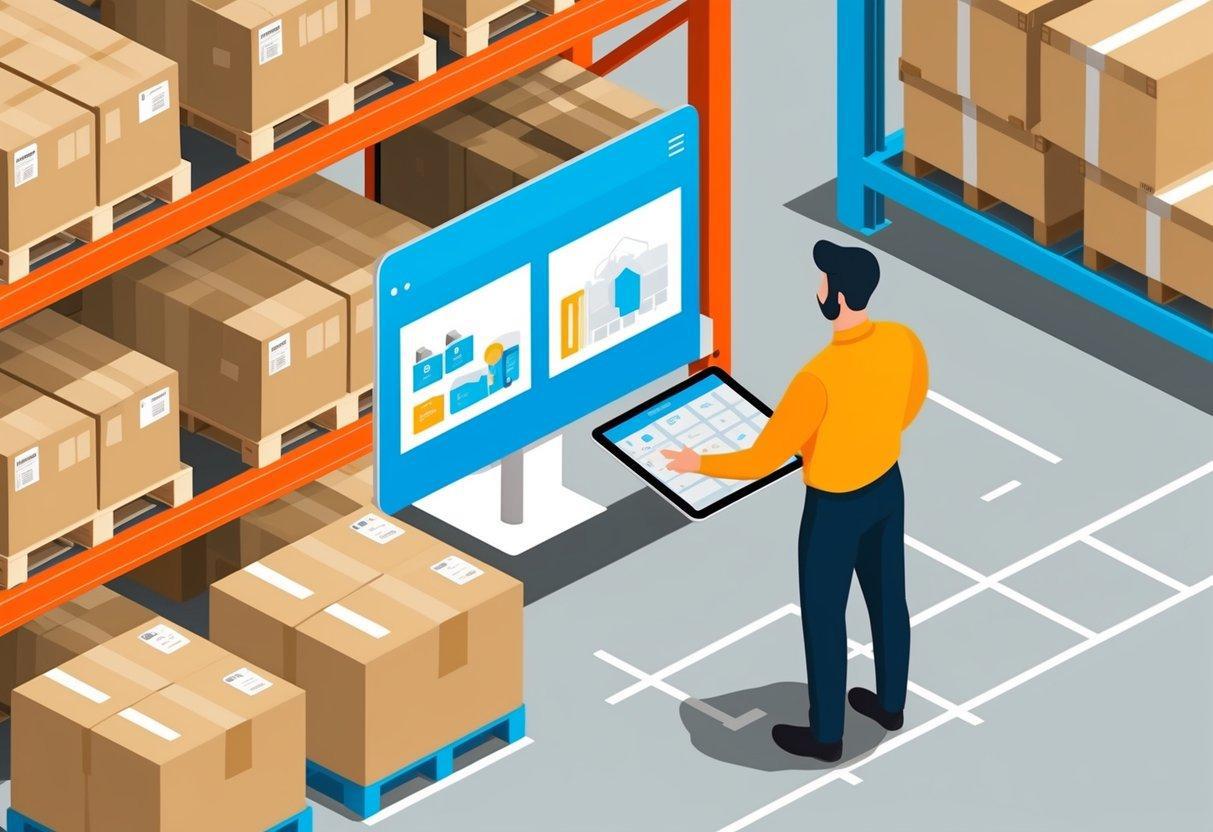
The right techniques and technology turn inventory reconciliation from a burden into a business advantage.
Techniques for Inventory Counting
Different counting methodologies offer various advantages depending on your business size, product types, and operational needs. The ideal approach balances accuracy with operational efficiency.
Full inventory counts provide a comprehensive snapshot of all inventory at a specific point in time. These counts are most appropriate for:
- Annual accounting and tax compliance
- Initial reconciliation when implementing new systems
- Businesses with smaller inventory volumes
- Regulatory requirements in certain industries
Cycle counting offers a practical alternative by dividing inventory into segments counted on a rotating schedule. This approach:
- Minimizes operational disruption
- Identifies problems sooner
- Distributes counting workload throughout the year
- Improves overall inventory accuracy over time
The ABC analysis method prioritizes counting efforts based on inventory value and movement:
- A items (high-value/high-turnover): Counted most frequently, perhaps monthly
- B items (moderate value/turnover): Counted quarterly
- C items (low-value/low-turnover): Counted semi-annually or annually
This strategic approach focuses resources where they deliver the greatest financial benefit.
Leveraging Technology for Accuracy
Modern technology improves reconciliation accuracy while reducing the time and labor required. Innovative tools change how businesses approach inventory management.
Barcode and RFID systems allow rapid, accurate data capture during counting. Rather than manually recording quantities, staff can scan items to automatically populate count sheets with correct product information, eliminating identification errors.
Inventory management software acts as the central nervous system for effective reconciliation. These platforms:
- Generate count sheets optimized for your warehouse layout
- Compare physical counts to system records in real-time
- Flag discrepancies for immediate investigation
- Maintain detailed audit trails of all adjustments
- Provide analytics on accuracy rates and problem areas
Mobile counting applications free staff from paper count sheets, allowing real-time data entry from anywhere in the warehouse. These applications often include built-in verification features that prompt for recounts when entries fall outside expected parameters.
For businesses exploring fulfillment partnerships, selecting providers with robust technological infrastructure makes inventory reconciliation a seamless part of their operational excellence.
Common Reconciliation Pitfalls and How to Avoid Them
Even well-intentioned reconciliation efforts can go awry. Knowing the common pitfalls helps you avoid them:
Rushed counting processes lead to inaccuracies. Schedule adequate time and resources for thorough counts, especially for high-value items.
Inadequate preparation creates confusion and errors. Before counting:
- Clear staging areas of mixed products
- Organize warehouse spaces
- Train counting teams thoroughly
- Prepare counting tools and documentation
Poor communication between departments causes reconciliation problems. Create clear communication channels between sales, purchasing, receiving, and warehouse teams to prevent discrepancies from occurring.
Inconsistent methodologies make trend analysis impossible. Standardize your counting and reconciliation processes so that results can be compared over time.
Failure to address root causes leads to recurring problems. Don’t just fix the numbers—fix the underlying issues causing discrepancies.
At Innovative Warehouse Solutions, we’ve helped numerous brands overcome these common reconciliation challenges through our structured processes and transparent approach to inventory management.
The Benefits of Regular Inventory Reconciliation
Consistent reconciliation delivers widespread advantages across your organization.
Improving Financial Accuracy
Regular inventory reconciliation directly impacts your financial statements and business valuation. Inventory often represents one of the largest assets on a company’s balance sheet, making its accurate valuation critical for financial reporting.
Proper reconciliation of inventory prevents financial misrepresentation by:
- Ensuring accurate Cost of Goods Sold (COGS) calculations
- Preventing inventory write-offs due to lost or damaged goods
- Providing accurate data for tax reporting and compliance
- Supporting proper asset valuation for investors or lenders
- Identifying theft or shrinkage before it significantly impacts profits
Businesses that implement regular reconciliation processes typically report inventory shrinkage rates below 1%, compared to industry averages of 1.5-3%. This reduction directly improves profit margins without requiring increased sales or reduced operational costs.
Enhancing Customer Satisfaction Through Case Example
To illustrate how inventory reconciliation impacts customer satisfaction, consider this real-world scenario we encountered with one of our clients:
A health and beauty brand was experiencing a 5% rate of backorders and cancellations due to inventory discrepancies. Customers would place orders for products that appeared available in their system but were actually out of stock. This led to customer frustration, support tickets, and lost sales.
After implementing a structured inventory reconciliation program with IWS:
- Backorder rates dropped to under 0.5%
- Customer complaints related to inventory issues decreased by 82%
- Repeat purchase rates increased by 14%
- Average order value grew by 8% as customer confidence improved
The direct connection between accurate inventory and customer satisfaction became clear: when customers can trust that what they order will be delivered, they order more frequently and in larger amounts.
In today’s competitive market, customer expectations for product availability and delivery speed continue to rise. By reconciling inventory regularly, you create the foundation for exceptional customer experiences that build loyalty.
Supporting Strategic Decision-Making
Beyond financial and customer benefits, regular inventory reconciliation drives better strategic decisions throughout your organization.
Accurate inventory data powers:
- Smarter purchasing decisions: Buy exactly what you need when you need it, reducing both stockouts and excessive inventories that tie up your working capital.
- More precise demand forecasting: With reliable historical usage data, your forecasting models become significantly more accurate.
- Optimized warehouse space: Identify slow-moving items that occupy valuable space and adjust stocking levels accordingly.
- Cost-saving opportunities: Eliminate rush shipping charges and premium procurement costs caused by unexpected stockouts.
- Staff productivity improvements: Decrease time spent searching for misplaced items or resolving inventory-related customer issues.
One of our clients in the beverage industry used their improved inventory accuracy to make seasonal purchasing decisions with much greater confidence. The result was a 22% reduction in carrying costs while maintaining 99.8% order fulfillment rates—a dual benefit only possible with highly accurate inventory data.
Inventory Reconciliation FAQs
How to reconcile inventory to general ledger?
Reconcile inventory to the general ledger by comparing the inventory balance in the accounting records with physical inventory counts. Identify discrepancies, adjust for outstanding transactions, and correct errors through journal entries. Regular reconciliation ensures accuracy in financial reporting.
How to do stock reconciliation in Excel?
Perform stock reconciliation in Excel by listing stock quantities, comparing them with recorded balances, and identifying variances. Use formulas like =IF(A2=B2,”Match”,”Mismatch”) to highlight differences. Adjust discrepancies through stock adjustments or journal entries to maintain accurate records.
What are the four types of inventory management systems?
The four types of inventory management systems are:
- Periodic Inventory System: Counts inventory at specific intervals.
- Perpetual Inventory System: Updates inventory records in real-time.
- Just-in-Time (JIT) Inventory: Minimizes stock by ordering as needed.
- ABC Analysis: Categorizes inventory based on value and importance.
What is the formula for stock inventory in Excel?
The stock inventory formula in Excel can be Ending Inventory = Beginning Inventory + Purchases – Sales. Use =B2+C2-D2 to calculate ending stock, where B2 is beginning inventory, C2 is purchases, and D2 is sales.
What is inventory reconciliation in SAP?
Inventory reconciliation in SAP involves verifying stock records against physical counts using transaction codes like MB51, MB52, and MIRO. SAP provides automated reconciliation through reports that track discrepancies, enabling adjustments to maintain accurate inventory data.
Your Path to Inventory Excellence
Mastering inventory reconciliation transforms your warehouse operations from a potential source of problems into a competitive advantage. By implementing structured counting processes, using appropriate technology, and establishing regular reconciliation schedules, you create the foundation for accurate inventory management that supports both operational excellence and business growth.
At Innovative Warehouse Solutions, we specialize in helping businesses implement effective reconciliation practices as part of our comprehensive inventory management services. Our transparent approach means you’ll always know exactly what you’re paying for, with no hidden fees or unexpected costs.
Ready to transform your approach to inventory management? Contact us today to learn how our expertise can help you master inventory reconciliation and accelerate your business growth.
How Our Inventory Management Services Drive Business Growth
Why Growing Brands Need Professional Inventory Management Support
You started your business to create amazing products, not to count boxes. Yet many growing brands find themselves trapped in a cycle of managing stock that pulls focus from what they do best. Without proper inventory management services, your operational complexity increases exponentially – eating into time you could spend on product development, marketing, and sales.
Our clients tell us that before partnering with IWS for stock management services, they typically spent 15-20 hours weekly on inventory tasks. That’s valuable time not spent on activities that directly grow revenue.
The IWS Difference: Inventory Provider Services That Prioritize Your Growth
At Innovative Warehouse Solutions, our inventory management services take on the operational burden so you can concentrate on creating more orders. Unlike other inventory provider services that offer impersonal support with hidden fees, we deliver:
- Real-time, personalized inventory management support: When you call us with a question about your stock, you speak directly with a team member who knows your business – not an automated system or overseas call center.
- Complete pricing transparency: Our straightforward pricing structure for services inventory means you’ll never find surprise charges on your bill. What we quote is what you pay.
- Proven accuracy track record: With 99.8% inventory accuracy across all our clients, our stock management services consistently outperform industry averages and reduce costly mistakes.
One health and beauty brand that came to us was struggling with inconsistent inventory counts that led to stockouts, backorders, and lost customers. Within three months of working with our inventory management support team, their customer satisfaction scores improved by 22%, and they redirected the time saved to launching two new product lines.
Our Inventory Management Services: Simplified for Your Success

We’ve designed our stock management services to be straightforward and reliable, removing the complexity that bogs down your business operations.
1. Receiving & Inventory Processing
When your stock arrives at our warehouse, our inventory management services team carefully counts and inspects each item before strategically placing it for maximum efficiency. You’ll receive a confirmation report within 24 hours, giving you complete visibility into your available inventory.
2. Order & Inventory Coordination
As orders come in through your sales channels, our services inventory system automatically captures them through our integrations with major e-commerce platforms. Each order is verified against stock levels and flagged for immediate processing.
3. Picking & Inventory Control
Our trained inventory provider services staff follows detailed protocols to select the correct items for each order, with built-in verification steps to maintain our high accuracy standards. Our stock management services include daily inventory reconciliation to prevent discrepancies and maintain stock count accuracy. This regular verification process is critical for preventing the costly errors that plague many growing businesses.
4. Shipping & Inventory Tracking
We partner with major carriers to provide you with competitive shipping rates. Once your order ships, both you and your customer receive tracking information automatically, while our inventory management support team updates your stock levels in real-time.
A beverage company partner who switched to IWS inventory management services from a larger provider told us: “The difference is night and day. With our previous inventory provider services, we had constant stock discrepancies and shipping delays. With IWS stock management services, we know exactly what’s happening with our inventory in real time, and our customers receive their products when promised.”
Technology That Makes Inventory Management Services Work For You
Many inventory provider services tout sophisticated technology, but often that translates to complex systems that require significant time to learn and manage. Our approach to inventory management support is different.
We’ve built our technology platform to be powerful yet intuitive, giving you:
- Simple inventory control: Monitor stock levels, order status, and fulfillment metrics through a clean, user-friendly dashboard designed specifically for our services inventory clients.
- Seamless integrations: Connect your existing e-commerce platforms with our stock management services without complex setup processes or technical headaches.
- Actionable inventory data: Access reports that help you make informed decisions about stock levels, product performance, and inventory strategy.
Our inventory management services technology does the heavy lifting behind the scenes, but you’re never left to navigate it alone. Your dedicated inventory management support manager helps you use these tools effectively to support your business goals.
Take the Next Step: Transform Your Inventory Management Today
You’ve built your business through dedication and a quality product. Isn’t it time your inventory management services matched that same level of excellence?
At IWS, we’re ready to show you exactly how our personalized inventory management support can free up your time, reduce costly errors, and help your business scale more effectively.
Contact us today for a no-obligation consultation. In just 30 minutes, we can:
- Review your current inventory challenges
- Outline specific solutions tailored to your business
- Provide transparent pricing with no hidden fees
- Share how similar businesses have grown after partnering with us
Call us at (555) 123-4567 or complete our quick contact form to schedule your consultation. Your customers are waiting for their orders—let us help you deliver them with the accuracy and speed they deserve.
Critical Strategies to Overcome Black Friday Supply Chain Challenges
Black Friday logistics present unique challenges that can make or break a retailer’s most profitable season. As order volumes skyrocket and customer expectations reach their peak, businesses face unprecedented pressure on their supply chains. Preparing for this retail phenomenon requires more than just stocking extra inventory—it demands a comprehensive strategy to handle increased demand while maintaining accuracy and customer satisfaction.
The difference between a successful Black Friday campaign and a costly failure often comes down to logistics preparation. With proper planning and the right fulfillment partner, businesses can turn the chaos of Black Friday into a competitive advantage rather than a supply chain nightmare.
Understanding Black Friday Logistics Challenges
The fourth quarter sales spike creates unique operational hurdles that require specialized planning and execution. Successful retailers recognize these challenges early and develop strategies to address them.
During this critical sales period, retailers experience order volumes that can increase tenfold overnight, placing extraordinary demands on every link in the supply chain. Transportation networks become congested, leading to shipping delays that damage customer relationships. Carriers implement peak season surcharges, cutting into profit margins.
Inventory management systems face their ultimate test as stock levels fluctuate dramatically, requiring real-time accuracy to prevent overselling or stock-outs. The pressure extends to warehouse operations where staff must maintain picking accuracy while processing orders at unprecedented speeds.
These challenges create a ripple effect throughout the entire fulfillment process, where a single bottleneck can lead to a cascade of delays and customer service issues.
Effective Black Friday Logistics

Forward-thinking businesses implement targeted solutions that address the specific demands of peak season fulfillment. These strategies focus on technology, partnerships, and customer communication to build resilience into every aspect of the operation.
For retailers shipping individual orders directly to consumers, optimizing your small parcel shipping processes becomes especially critical during the holiday rush when carrier networks face unprecedented strain and delivery windows tighten significantly.
Adopt Advanced Logistics Technologies
Successful Black Friday operations rely on technology that scales with demand spikes. Predictive analytics have become essential for accurate demand forecasting, allowing retailers to anticipate order volumes based on historical data and current market trends.
Real-time inventory tracking systems provide visibility across all sales channels, preventing the costly mistake of selling products that aren’t actually available. These systems allow businesses to set accurate inventory thresholds and automate reordering processes to maintain optimal stock levels during high-volume periods.
Warehouse management systems (WMS) that integrate with shopping carts and marketplaces create a seamless flow of information, reducing manual data entry and the errors that come with it. The right technology stack doesn’t just improve operations—it creates a competitive advantage through greater speed and accuracy.
Strengthen Supply Chain Partnerships
Strong partnerships with reliable 3PL providers become invaluable during Black Friday. These relationships provide access to additional warehouse space, labor, and expertise without long-term commitments or capital investments.
Working with Innovative Warehouse Solutions gives businesses the flexibility to scale operations as needed during peak periods. Their transparent pricing model eliminates surprise fees during high-volume seasons, while their customer-focused approach ensures businesses receive personalized support when they need it most.
The best partnerships extend beyond simple transaction processing. Look for 3PL providers who proactively identify potential issues and suggest improvements to your fulfillment strategy. This collaborative approach transforms logistics from a potential liability into a strategic asset during Black Friday.
Enhance Customer Service and Engagement
What separates successful companies from those that struggle during Black Friday is how they manage customer expectations and respond to issues.
Proactive communication about shipping timeframes helps set realistic customer expectations. Using automated order status updates keeps customers informed at every stage of the fulfillment process, reducing anxiety and support inquiries. When shipping delays occur, timely notifications help preserve customer trust.
Creating a dedicated customer service team for Black Friday ensures someone is always available to address urgent concerns. Training this team on common Black Friday logistics issues enables them to provide quick, accurate responses that maintain customer satisfaction even when problems arise.
Preparing Your Warehouse and Inventory for Black Friday
Operational readiness determines how effectively your business can handle the Black Friday rush. Proactive preparation of your physical space and inventory systems creates the foundation for successful execution.
Optimize Warehouse Operations
Smart slotting—placing popular items in easily accessible locations—reduces picking time and improves throughput. Creating dedicated zones for Black Friday promotions further streamlines operations.
Staff training and clear standard operating procedures ensure consistency even with temporary workers. Understanding common order fulfillment mistakes and implementing prevention strategies becomes especially important when processing high volumes with seasonal staff who may lack extensive experience.
Effective warehouse software provides real-time visibility into operations, allowing managers to identify and resolve issues before they impact customer orders. Mobile scanning technology reduces errors while increasing productivity, supporting both speed and accuracy during peak periods.
Flexible Fulfillment Solutions
The unexpected nature of Black Friday demands adaptability in fulfillment operations. Scaling capacity through temporary staffing, extended hours, or additional shifts helps manage order surges without sacrificing quality.
Alternative shipping methods provide options when primary carriers become overwhelmed. Exploring the benefits of cross dockings can significantly reduce transit times and shipping costs by consolidating shipments and bypassing distribution centers—particularly valuable when moving high volumes during peak season.
Batch processing orders by shipping method or destination improves efficiency while reducing costs. Setting clear cutoff times for same-day shipping helps manage customer expectations while creating predictable workflows for warehouse staff.
Marketing and Sales Strategies for Maximum Impact
Success during Black Friday requires tight coordination between marketing efforts and operational capabilities. Strategic alignment ensures promotions drive sales without overwhelming fulfillment systems.
Optimize Product Listings for E-commerce Platforms
Clear, detailed product descriptions reduce returns by setting accurate customer expectations—a critical factor during high-volume periods when returns can overwhelm reverse logistics operations.
High-quality images from multiple angles help customers make informed decisions, further reducing return rates. Complete product specifications, including dimensions and weights, are particularly important for Black Friday shoppers making quick purchase decisions.
Inventory levels displayed on product pages help customers understand availability, reducing customer service inquiries. When integrated with your warehouse management system, these displays provide accurate, real-time information that builds customer trust.
Real-time Marketing Adjustments
Black Friday requires marketing agility, with data informing quick decisions. Monitoring sales velocity by product allows for promotional adjustments that prevent stockouts of popular items while boosting slower-moving inventory.
Email and social media campaigns can be adjusted throughout the day to highlight available inventory and promote alternatives when bestsellers sell out. This approach maximizes sales while helping manage inventory levels.
Integration between marketing and fulfillment systems ensures promotional activities align with operational capacity. This coordination prevents the common Black Friday logistics failure of generating more orders than your operation can handle efficiently.
Black Friday Logistics FAQs
How does Black Friday affect the supply chain?
Black Friday increases supply chain demand, causing higher shipping volumes, inventory shortages, and potential delivery delays. Retailers prepare by stocking inventory early, optimizing logistics, and coordinating with carriers to handle surges.
Are there deliveries on Black Friday?
Yes, most major carriers, including USPS, FedEx, and UPS, continue deliveries on Black Friday. However, delays may occur due to increased shipping volumes and high order demand.
Does FedEx work on Black Friday?
Yes, FedEx operates on Black Friday with normal delivery services. Some FedEx locations may have modified hours, but shipping and customer support remain available.
Will Amazon deliver on Black Friday?
Yes, Amazon delivers on Black Friday. Prime members receive expedited shipping, but high order volumes may cause minor delays. Amazon’s logistics network prepares in advance to meet increased demand.
What is the Black Friday effect?
The Black Friday effect refers to the surge in consumer spending, supply chain strain, and increased retail competition. It impacts inventory levels, delivery speed, and pricing strategies as businesses handle peak shopping demand.
Conclusion
Black Friday represents both a significant opportunity and a substantial challenge for e-commerce businesses. The difference between capturing record sales and facing thanksgiving challenges often comes down to logistics preparation and execution.
By investing in advanced technologies, strengthening supply chain partnerships, enhancing customer service, optimizing warehouse operations, implementing flexible fulfillment solutions, and aligning marketing with operational capacity, businesses can navigate the complexities of Black Friday logistics with confidence.
The most successful companies recognize that Black Friday preparation begins months in advance. Working with an experienced 3PL partner like Innovative Warehouse Solutions provides the expertise, technology, and scalability needed to turn Black Friday challenges into opportunities for growth and customer satisfaction.
Next Day Air (NDA) Shipping: Facts & Benefits for Your Business
Is your business losing customers due to slow delivery times? Shipped NDA (Next Day Air) could transform your fulfillment strategy. When customers place urgent orders, waiting days for delivery isn’t just inconvenient—it can cost you their loyalty.
Next day air shipping guarantees your products reach customers within 24 hours, turning delivery speed into your competitive advantage. While standard shipping methods might save money upfront, NDA shipping delivers the rapid response time today’s consumers demand, helping you build a reputation for reliability that keeps customers coming back.
Understanding NDA Shipping
NDA shipping, or Next Day Air shipping, is a premium delivery service that ensures packages are delivered the next business day after being shipped. When a package is shipped NDA, it receives priority handling throughout the entire shipping process, from pickup to delivery.
The term “NDA” in shipping doesn’t refer to a Non-Disclosure Agreement as in legal contexts, but rather to Next Day Air service. Major carriers like UPS, FedEx, and DHL offer NDA shipping options with guaranteed delivery times, typically by noon or the end of business the following day after shipment.
Various industries rely on NDA shipment services for different reasons:
- E-commerce retailers use NDA delivery to offer premium shipping options and meet customer expectations for rapid fulfillment
- Medical suppliers depend on NDA shipping for time-sensitive medical supplies and equipment
- Manufacturing companies utilize Next Day Air for critical replacement parts to minimize downtime
- Legal firms ship NDA for time-sensitive documents and contracts requiring immediate attention
For e-commerce businesses especially, combining NDA shipping with effective small parcel fulfillment strategies can create a powerful competitive advantage. This approach ensures both speed and accuracy for your most time-sensitive deliveries, making it particularly valuable for premium product lines or VIP customer segments.
For small to mid-sized businesses, partnering with a fulfillment provider that offers NDA shipping capabilities can be a cost-effective way to provide this premium service without managing the logistics internally.
Benefits of Next Day Air (NDA) Shipping
Why should your business consider implementing NDA shipping options? The advantages extend far beyond just faster delivery times.
Speed and Efficiency
The primary advantage of NDA shipping is the dramatic reduction in transit time. When a package is shipped NDA, it typically reaches its destination within 24 hours, compared to the 2-7 business days standard shipping might take. This rapid delivery creates several cascading benefits, including reduced lead times from order placement to delivery and faster business inventory turnover rates.
Cost-Effectiveness
While NDA shipping costs more than standard shipping options, the return on investment often justifies the expense. Premium pricing opportunities emerge as customers willing to pay for expedited shipping often generate higher margin sales. Businesses benefit from reduced inventory holding costs since faster shipping means maintaining lower inventory levels. The service also lowers the risk of obsolescence for time-sensitive products and increases customer lifetime value through improved satisfaction and loyalty.
When working with the right fulfillment partner, businesses can negotiate preferential rates for NDA shipping based on volume, making this premium service more affordable than handling it independently.
Security and Confidentiality
NDA shipping offers enhanced security features that protect both the physical package and the information about what’s being shipped. Signature requirements verify the intended recipient received the package while enhanced tracking provides minute-by-minute visibility into shipment location. Specialized handling procedures minimize the risk of damage or loss, and limited handling points reduce exposure to potential security breaches.
For businesses sending sensitive documents or valuable merchandise, these security features provide peace of mind that standard shipping services can’t match. Healthcare companies, legal firms, and financial institutions particularly value this aspect of NDA shipping when transporting confidential materials.
How NDA Shipping Works

Understanding the mechanics behind NDA shipping can help businesses maximize its benefits and set appropriate customer expectations.
Process Overview
The NDA shipment process follows these key steps:
- Package Preparation: The sender prepares the package according to carrier guidelines.
- Pickup or Drop-off: The package enters the carrier’s network via scheduled pickup or drop-off at a service center.
- Priority Processing: NDA packages receive priority sorting and handling at all facilities.
- Air Transport: Packages are transported via air freight to the destination city, typically during overnight hours.
- Final Delivery: Packages are sorted at the destination facility and assigned to delivery vehicles for next-day delivery.
When tracking your NDA shipments, you might occasionally see status updates like what does pending remote fulfillment mean in your carrier’s system. Understanding these statuses helps set proper expectations for your team and customers about when packages will move from processing to active transit, especially when shipping from distributed warehouse networks.
This streamlined process minimizes handling time at each stage. When a package is shipped NDA, it’s flagged in the carrier’s system for expedited processing, ensuring it moves through the network faster than standard shipments.
Packaging and Labeling
Proper packaging is critical for NDA shipping success. Carriers provide specific packaging guidelines for NDA shipments, and special labeling identifies the package as requiring expedited processing. Dimensional weight considerations are particularly important for air shipments since pricing often depends on actual and dimensional weight. Electronic shipping labels contain detailed routing information for automated sorting systems to ensure the package moves efficiently through the carrier’s network.
Many businesses choose to work with 3PL providers that specialize in proper packaging techniques for expedited shipments, reducing the risk of delays due to packaging issues.
Tracking and Monitoring
Advanced tracking is a standard feature of NDA shipping services. Real-time GPS tracking provides location updates throughout the journey, while automated notifications alert both sender and recipient of shipment progress. Proof of delivery confirms successful completion of the shipment, and exception alerts notify stakeholders of potential delays or issues that might affect delivery timing.
Choosing the Right NDA Shipping Solution

Not all NDA shipping services are created equal. Businesses must evaluate several factors to select the option that best meets their needs.
Factors to Consider
When evaluating NDA shipping options, businesses should examine:
- Delivery Timeframes: Some carriers offer early morning delivery guarantees, while others promise delivery by end of business day
- Geographic Coverage: Coverage areas vary by carrier, with some offering more extensive rural delivery networks
- Service Reliability: Track record of on-time delivery performance
- Integration Capabilities: Compatibility with existing order management and shipping systems
- Transportation Type: Understanding the distinction between shipment vs cargo is important when considering air freight options, as this affects how your packages are prioritized and handled during transport
The right choice depends on your specific business requirements. Companies with nationwide customers should prioritize carriers with comprehensive geographic coverage, while those with time-critical deliveries may focus on carriers offering the earliest guaranteed delivery times.
Cost Considerations
NDA shipping costs are influenced by several factors:
- Package weight and dimensions
- Shipping distance and zones
- Delivery timeframe (morning delivery typically costs more than afternoon)
- Additional services (Saturday delivery, signature requirements)
- Fuel surcharges and accessorial fees
To optimize NDA shipping costs, consider working with fulfillment specialists who have negotiated volume discounts with major carriers and can pass these savings on to clients.
Common Challenges and Solutions
Businesses implementing NDA shipping often face these challenges:
| Challenge | Solution |
| High shipping costs | Negotiate volume-based discounts; offer as premium customer option |
| Limited pickup windows | Partner with 3PLs offering extended operational hours |
| Addressing errors causing delays | Implement address verification systems |
| Weather-related delays | Build buffer time for seasonal weather patterns |
Proactive planning can minimize these challenges and ensure reliable NDA shipping performance throughout the year.
Shipped NDA FAQs
What is the full form of NDA in logistics?
In logistics, NDA stands for Next Day Air, a shipping service that guarantees delivery by the next business day. It is commonly offered by carriers like FedEx and UPS for time-sensitive shipments.
What is UPSN shipping?
UPSN (UPS SurePost) is a hybrid shipping service where UPS handles most of the delivery, but the final delivery is completed by USPS. It is a cost-effective option for lightweight residential shipments.
What are UPS shipping codes?
UPS shipping codes indicate service levels and delivery speeds, such as 1DA (Next Day Air), 2DA (2nd Day Air), GND (Ground), and SAV (Saver). These codes help classify shipping methods and transit times.
Conclusion
Shipped NDA services represent a valuable tool for businesses seeking to enhance customer satisfaction through rapid, reliable delivery. From the speed and efficiency that meets urgent customer needs to the security and tracking capabilities that provide peace of mind, NDA shipping delivers benefits far beyond simple next-day delivery.
For businesses considering NDA shipping implementation, the key is finding the right balance between cost and service level. By understanding NDA shipping meaning in the context of your specific business needs, you can make informed decisions about when and how to utilize this premium service.
Ready to explore how NDA shipping could benefit your business? Contact Innovative Warehouse Solutions today to discuss customized NDA shipping strategies that align with your business goals and customer expectations. Our logistics experts can help you navigate carrier options, optimize costs, and implement efficient processes for successful NDA shipments.

